We all like baby animals, and we can’t lie. The appeal of these tiny creatures is simply universal. Part of the charm is that they are still naïve and curious creatures at this point in their lives. Thanks to their natural sweetness, adults just melt into puddles at the sight of them! Check out these baby animals from various species so you can see what we are getting at. You might be surprised to see that even those that are quite terrifying as adults make for precious babies.
Baby Hedgehog
Did you know that baby hedgehogs are known as “hoglets”? They are some of the most adorable things we have ever seen in our lives. This must have to do with the deadly combination of little hands and round bodies. The feet that stick out go so well with the sweet expression. They are not like porcupines as their quills do not shoot out. They are not dangerous either, so you can cuddle with them as much as you want. The quills are there so that they can curl up in a ball and scare away predators when needed.
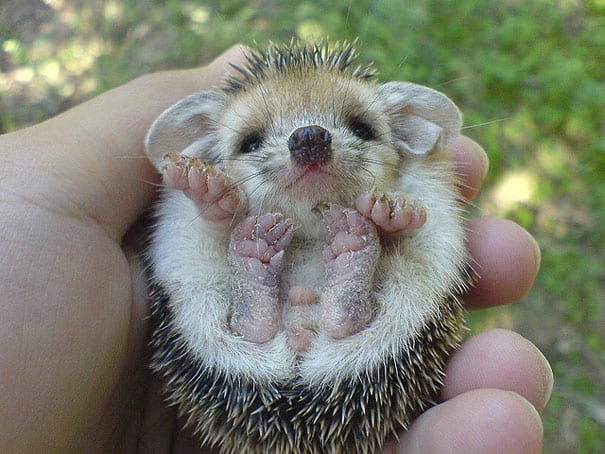
Baby Hedgehog
Baby Dolphin
Dolphins are truly fascinating animals. Aside from their high intelligence, they make for the cutest babies as well! Did you know that they develop hind limbs in utero, only for them to retract and vanish before birth? This is an indication that they evolved from four-legged terrestrial mammals. They display traits considered unique among marine animals. For one thing, they like to play! Dolphins have also been recorded riding the waves and making bubble rings through their blowholes. They would then spin them using their beaks and bite to pop them. We would love to see them do this up close and personal.
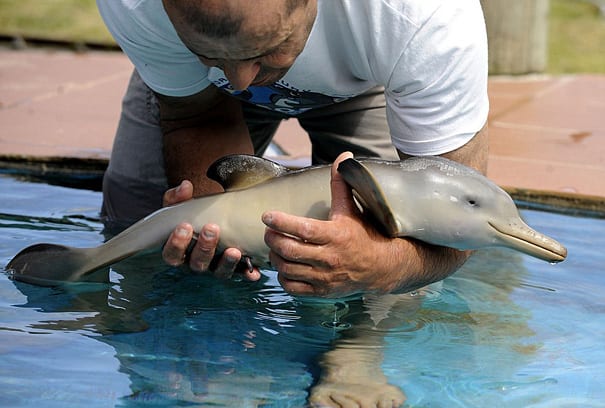
Baby Dolphin
Baby Hamster
Hamsters, unlike the baby sloth, are born blind and naked. They only start to develop a sense of sight and open their eyes by the time they are 14 to 17 days old. The pregnancies only last three weeks, and a mother hamster can have anywhere from six to 20 hamsters per litter. Talk about cuteness overload. Sadly, things can go wrong when a mother hamster is stressed out during or after birth. When this happens, she might abandon or eat her babies. If you have a pregnant hamster, give her a lot of TLC!
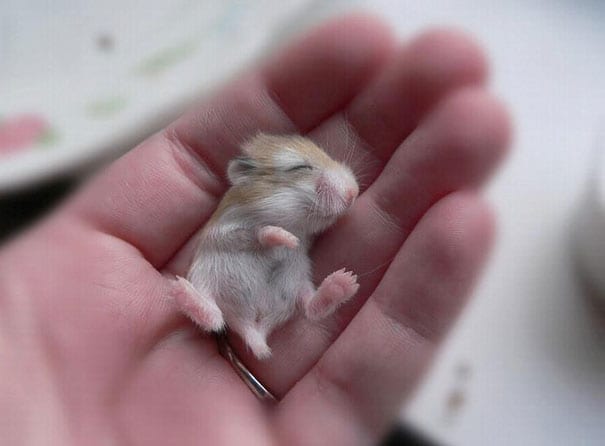
Baby Hamster
Baby Kangaroo
In case you did not know, baby kangaroos are known as joeys. They are simply adorable. The way they came into this world is also fascinating. A baby kangaroo is born into a pouch on the belly of the mother. They are in an immature stage of development with only a length of an inch and weighing less than a gram. The baby then begins to suckle and then spends more and more time outside of the pouch until it is ready to leave completely. This typically happens anywhere from seven to ten months of age.
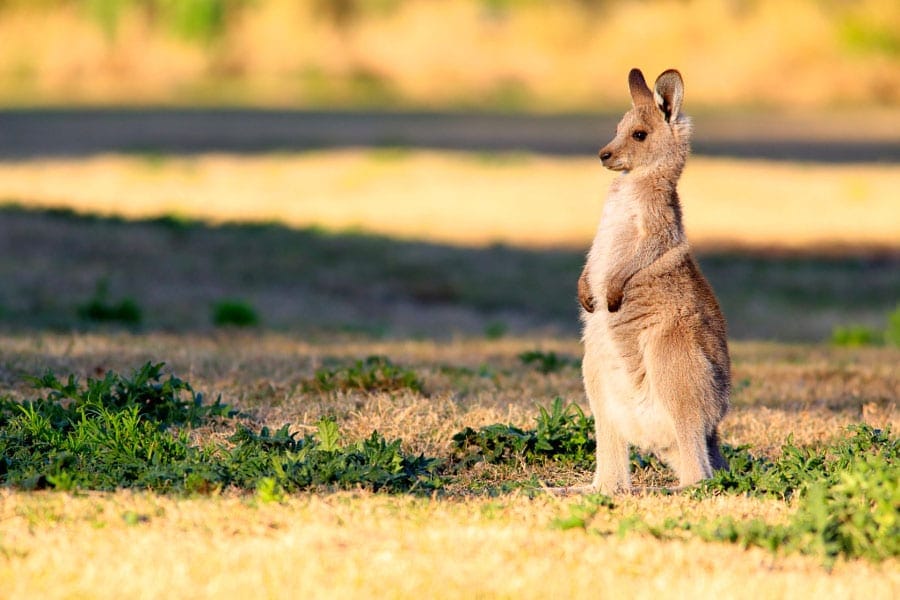
Baby Kangaroo
Baby Cat
Aside from puppies, we are sure that you expected to find kittens on the list. It is not hard to see why this is the case. You only have to check out this adorable newborn Persian to see what we mean. Is there anything cuter than those large eyes on an oversized head? We are going crazy over its tiny paws as well. Kittens have always ruled the world and the internet. There is no need to introduce our adorable furry friends since they are ubiquitous. Let us just get on with it and talk about other cute babies!
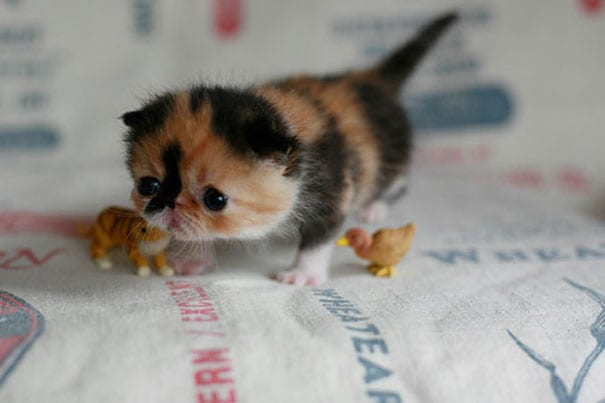
Baby Cat
Baby Stingrays
True, you probably should not cuddle with a stingray. The adult ones might look scary, but the babies are so cute! The flat sea creatures fly through the waters by moving their whole bodies wavily or flapping their fins. You will find their eyes at the bottom of their body, so they have to look for food using electroreceptors and their sense of smell. They sound like aliens but adorable ones at that!
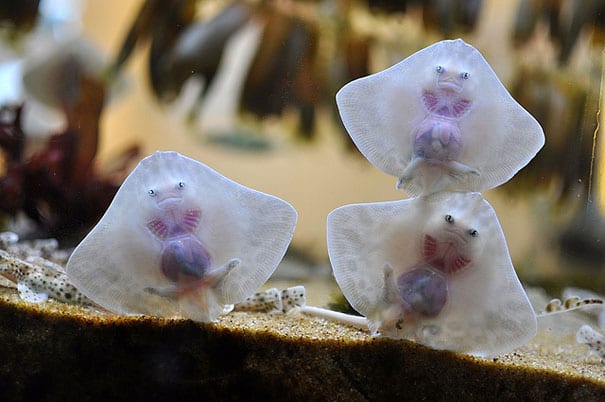
Baby Stingrays
Baby Squirrel
We are all familiar with squirrels. They are actually found on every single continent, except for Australia and Antarctica. This is great news as it means that we have a high chance of seeing a baby squirrel at least once in our lives. Once they are weaned by the seventh or eighth week after birth, they finally leave the nest. They do not normally go far, only heading less than two miles away. They also have a green thumb of sorts. Gray squirrels typically bury acorns but forget, so the oak trees grow big!
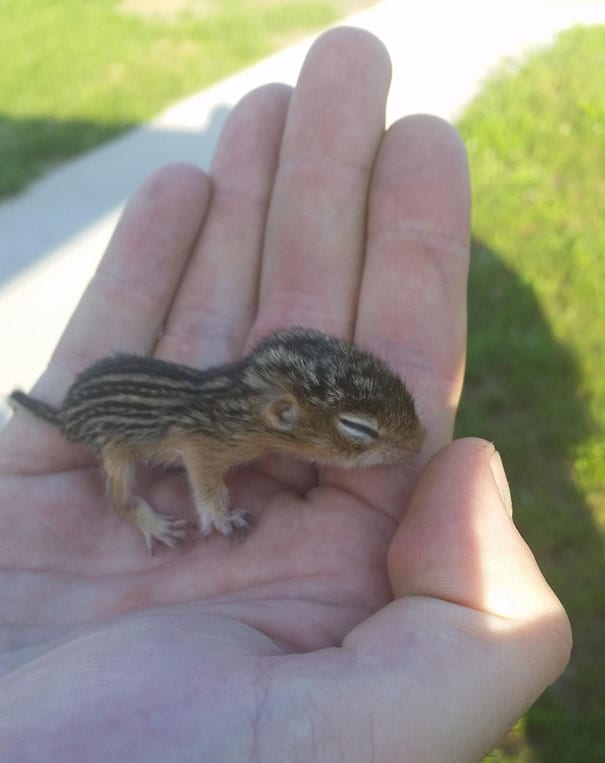
Baby Squirrel
Baby Pig
Aww, will you look at this smiling little piglet? Pigs are not just cute, but they happen to be brilliant creatures too. Baby pigs can recognize their mother’s voice and start to become familiar with their names at the age of two weeks. That is already impressive enough on its own, but mother pigs can also ‘sing’ to their babes as they nurse. We would also love to be able to sing to this adorable piglet.
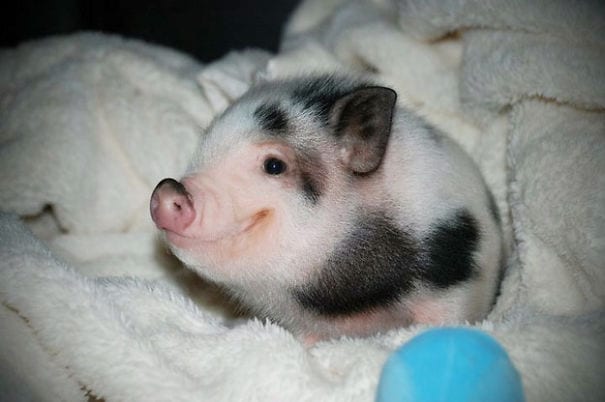
Baby Pig
Baby Sloth
We are lucky that sloths move slowly. After all, this only gives us even more time to see their cuteness. The smiley sloth is unique in many aspects. For one thing, sloth babies enter the world furred and with open eyes. They can also cling and climb to their mother’s fur only a couple of moments after birth. Indeed, these animals are fascinating creatures. Sloths tend to move and eat very slowly. Aside from that, they like to spend their whole life in a single tree!
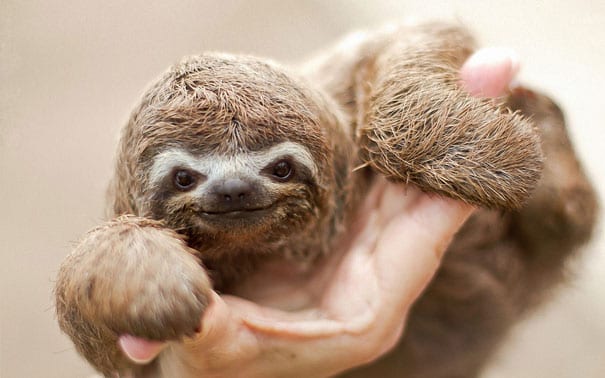
Baby Sloth
Baby Crocodile
When we talk about dangerous predators, you probably imagine them in all their adult glory. You might be surprised to see just how cute baby crocodiles are. One of the oldest species on Earth has been on the planet since the dinosaurs were around. They hatch from eggs, but the nest temperature determines if the baby is male or female. Once they are born, things can get very dangerous. In fact, 99 percent of babies are eaten by bigger creatures within the first year of their life. This one got lucky!
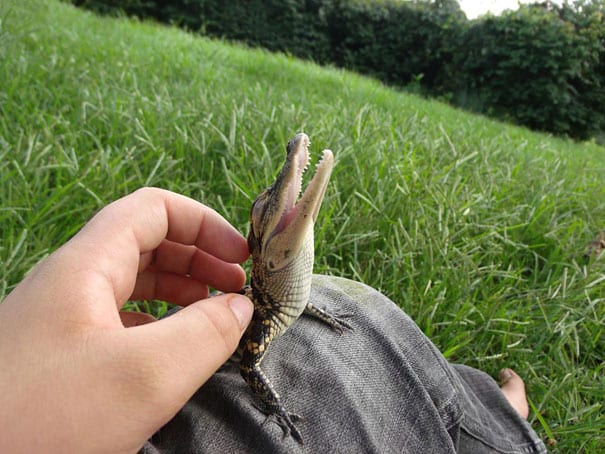
Baby Crocodile
Baby Dog
How can anyone possibly resist the charms of a cute little puppy? There is a lot of dog varieties across the globe. Luckily for us, this only means that there is a plethora of adorableness in the puppy flavor! You are looking at a miniature Goldendoodle, which is one of our favorite breeds of dogs on the planet.
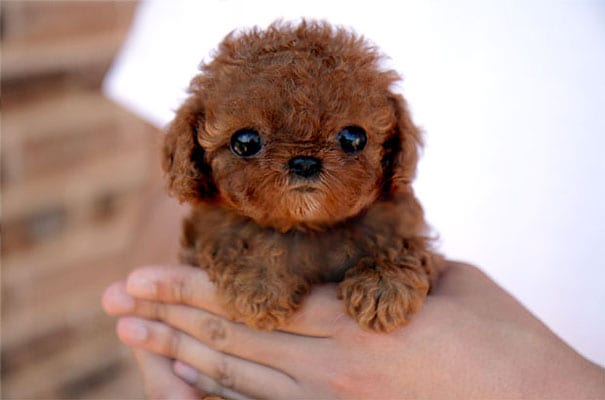
Baby Dog
Baby Fennec Fox
Native to the Sahara Desert, the Fennec fox is a unique animal. It is the smallest fox species on the planet, but it can survive the harsh environment of the desert. They even have ears that can reach six inches long. Fun fact: they can tilt their heads to the side to use them as a way to see where the prey is. Aside from that, their ears help dissipate heat to keep themselves cool under the desert sun.
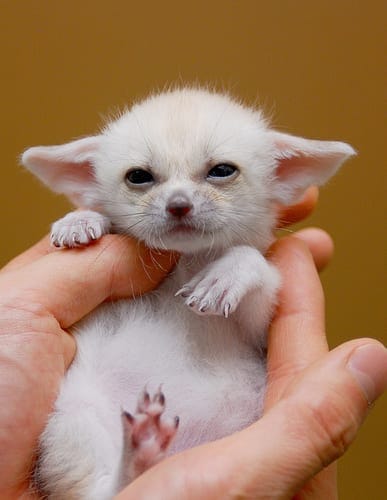
Baby Fennec Fox
Baby Tortoise
The baby tortoise in this photo had been trying to go for a strawberry nearly his size. Isn’t that the cutest thing you have ever heard? Hatchlings or baby tortoises are quite similar to adult ones. But the biggest difference is that they are a lot more sensitive to changes in temperature. Aside from that, they are hardy animals that enjoy lying in the sun and eating many fruits and veggies. That must be life!
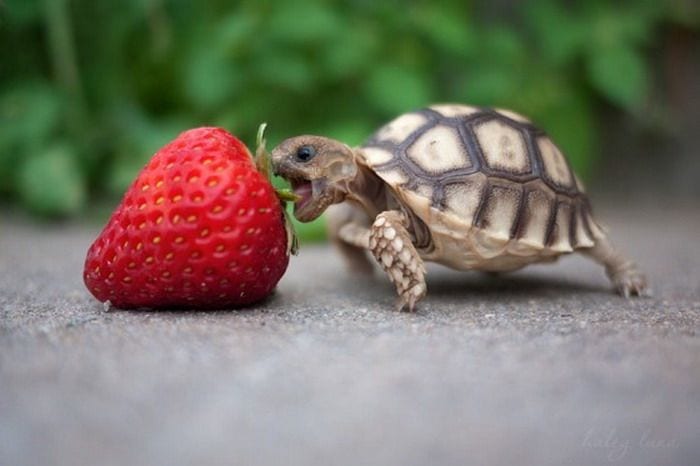
Baby Tortoise
Baby Chimpanzee
There is no need to feel surprised if the baby chimp looks oddly familiar to you. After all, chimpanzees are the animals that are most closely related to us. In fact, chimps and humans have 98.5 percent of the same DNA. You can easily recognize that we have similar facial structures. They are only a couple of evolutionary steps away from us. Aside from that, chimps also exhibit behaviors similar to ours. They laugh when playing and hug to display affection. We would love to hug this adorable baby ourselves.
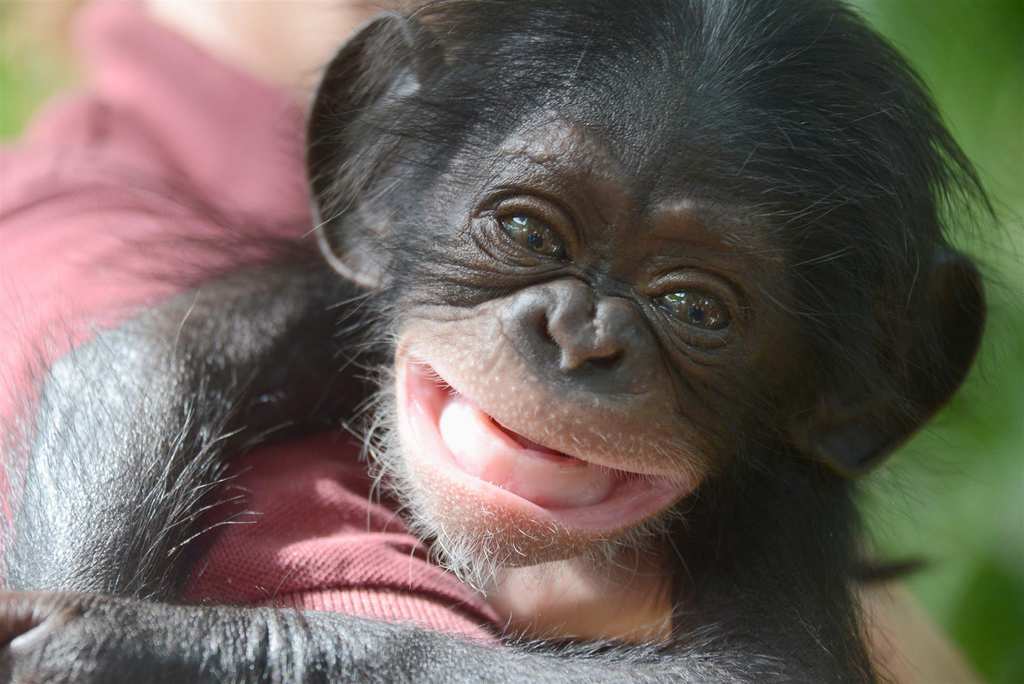
Baby Chimpanzee
Baby Giraffe
Giraffes indeed look rather bizarre. But did you know that, upon birth, the baby drops as high as six feet and lands on its head? However, there is no need to worry. It does not hurt! In fact, it is said to be the most important part of the process as this helps them take the first gasp of air. In an hour, the baby will learn how to walk. We would kill to watch a baby giraffe take its first steps after it is born!
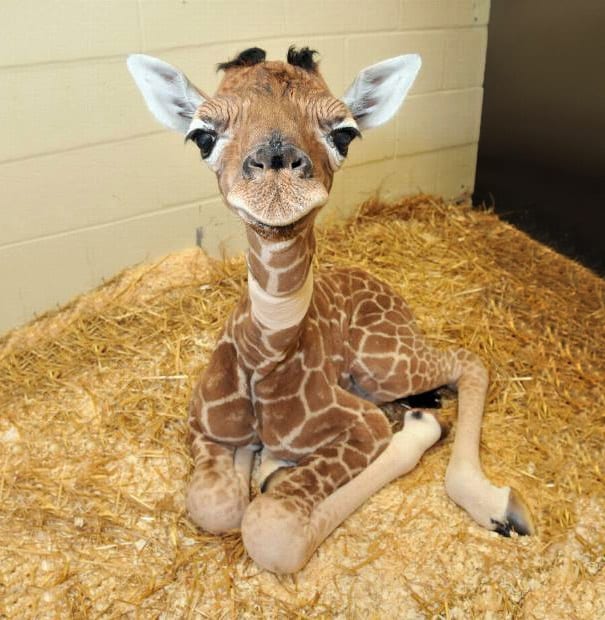
Baby Giraffe
Baby Tapir
Allow us to introduce this animal to you if you have never seen it before. The tapir is a scarce exotic species. Sadly, there are only around 3,000 of it left in the world right now. It might have something to do with how tapirs only give birth to a single baby in their entire life. They have a unique pattern on the body that works as camo in the rainforest. Don’t they look like a cute mix of an elephant and pig?
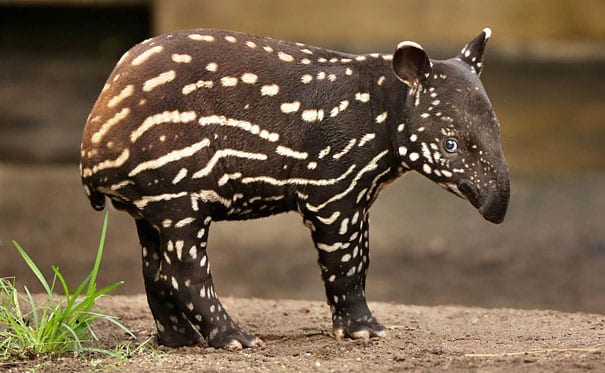
Baby Tapir
Baby Chameleon
You are looking at a photo of a baby chameleon. There are 171 chameleon species, and they come in a variety of sizes. They are unique reptiles for several reasons. For one thing, they do not lay eggs and hatch. Instead, they give birth to babies! Another special thing about them is that their eyes are capable of moving independently, so they can look in two opposite directions simultaneously. Mind you. They can also zoom in. These strange creatures happen to be adorable as well.
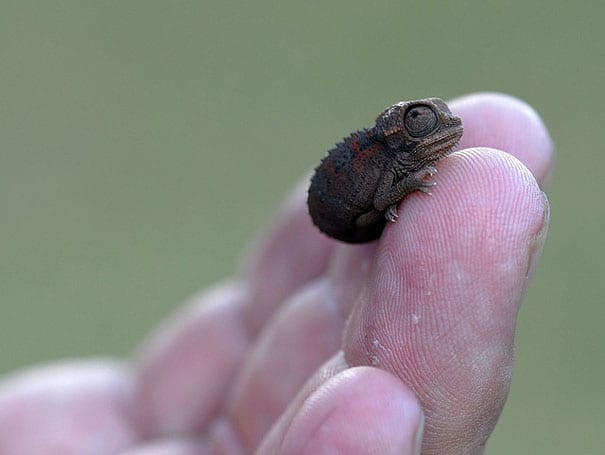
Baby Chameleon
Baby Alpaca
We are losing our minds over the cuteness of the baby alpaca in this photo. They might be native to South America, but they have been exported to different parts of the world. They have soft and fuzzy wool, but the best thing about them is that they are gentle and social animals. With the right training, it will make for the perfect pet. We would love a friend that can give us cozy sweaters as well.
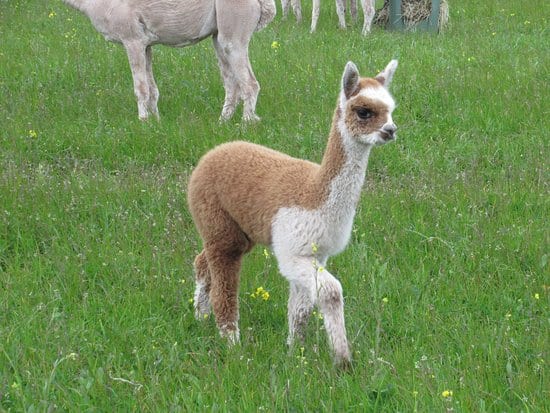
Baby Alpaca
Baby Owl
Where do we even begin with owls? They have round bodies, huge eyes, and fluffy feathers. These amazing creatures also start incredibly lovable! We love them, and they tend to love us back. Sadly, it can be too much at times. While rehabilitating these babies, caretakers need to ensure that the owlets won’t get too attached. They would even don camouflage and feed the baby using tweezers held by an owl puppet between the mouth. If we were in their shoes, we would simply let the babies get attached.
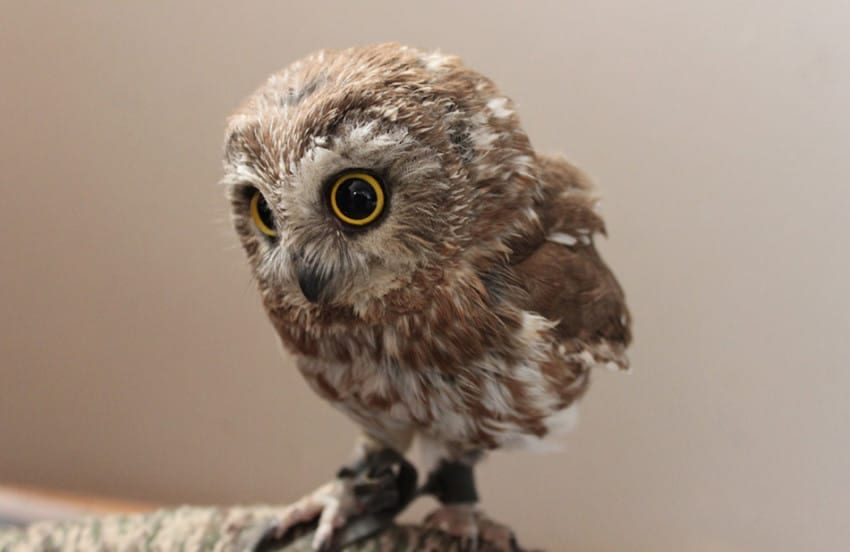
Baby Owl
Baby Pygmy Hippo
You are looking at a photo of a little pygmy hippo. This little fellow happens to be super friendly as well. In the animal kingdom, hippos have one of the longest pregnancies. After eight months, they only deliver a single baby. After a few weeks of bonding between the mother and the child, the older hippo joins a gang of female hippos who work together to keep their babies safe from predators. The orphan in this photo looks like they found a substitute mother. How cute is this photo?
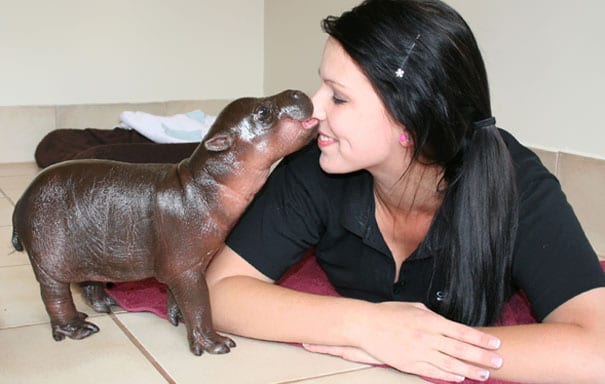
Baby Pygmy Hippo
Baby Platypus
Will you look at this cutie? If you are not sure what it is, we want you to know that this is a platypus. It is also known as the duck-billed platypus. Even though it looks like some mythical creature, trust us when we say that it is real. It is a semiaquatic mammal that lays eggs. It is found in eastern Australia, which includes Tasmania. This animal happens to be the only living species in its genus and family.
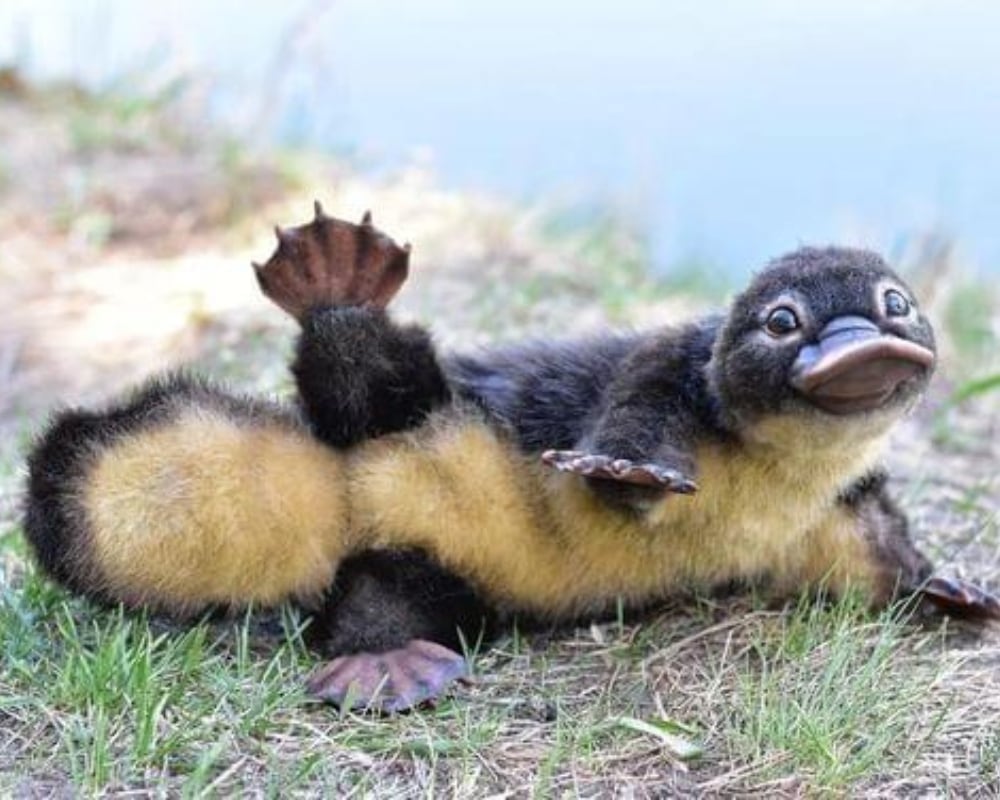
Baby Platypus
Baby Bison
Whoa, will you check out the baby bison in this photo? He was trotting along so that he could keep up with the other members of the herd. Once it is born, the American bison calf weighs anywhere from 30 to 70 pounds. Aside from the mom, the rest of the herd protects the baby as well. In the wild, an adult bison goes on to live for 14 to 24 years. It goes without saying that this is only the start for this little guy.
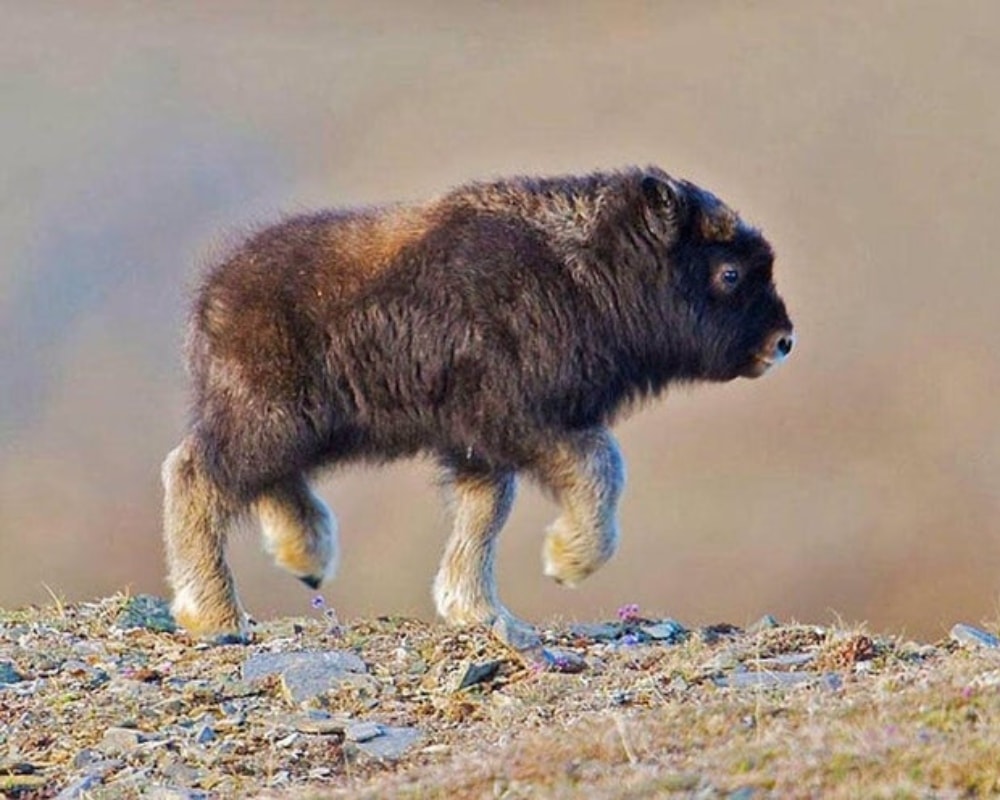
Baby Bison
Baby Gorilla
What is it about monkeys, gorillas, and chimps? We just cannot get enough of them. You must see what we are getting at once. You lay your eyes on this bundle of joy. She is so small! An infant gorilla is smaller than a human baby at the time of birth. This photo weighed less than five pounds when it was born on September 28, 2018. It was born to its mother, Kumbuka, at the Jackson Zoo and Gardens.
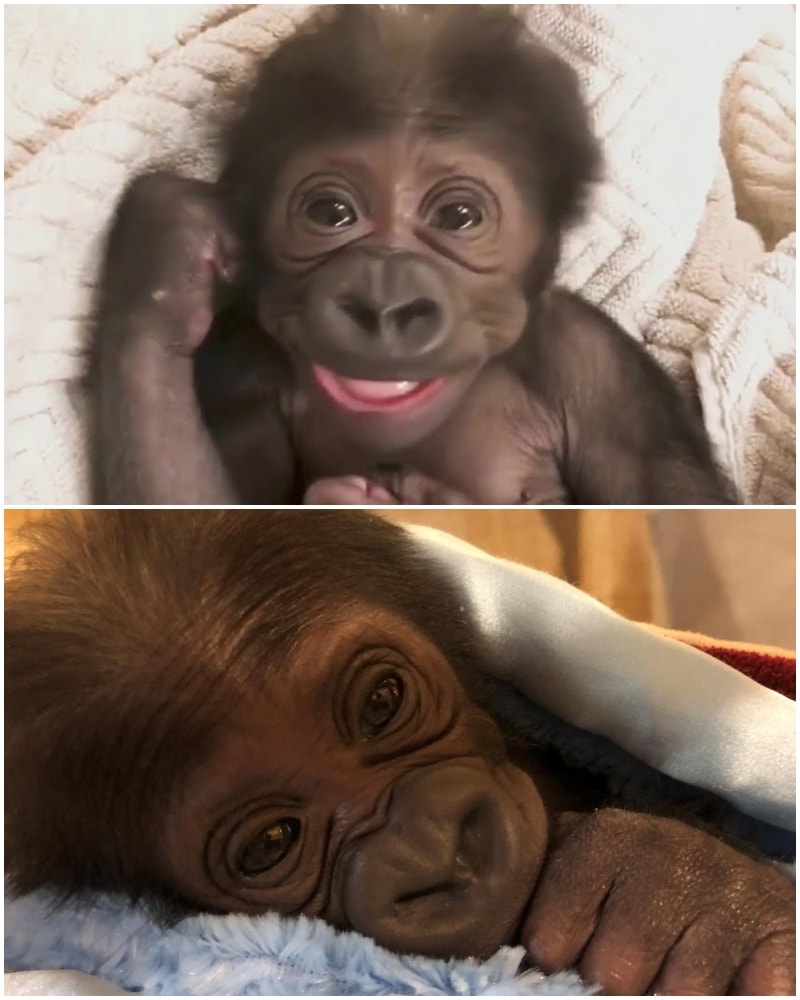
Baby Gorilla
Baby Okapi
Before this day, we did not even know that this animal existed. At any rate, we are glad that it is a part of our world. Also called the forest giraffe, the okapi is an even-toed mammal found to the northeast of the Democratic Republic of the Congo. This animal also comes with striped markings that look like the ones on zebras, even though it is more related to the giraffe. We could stare at this photo all day!
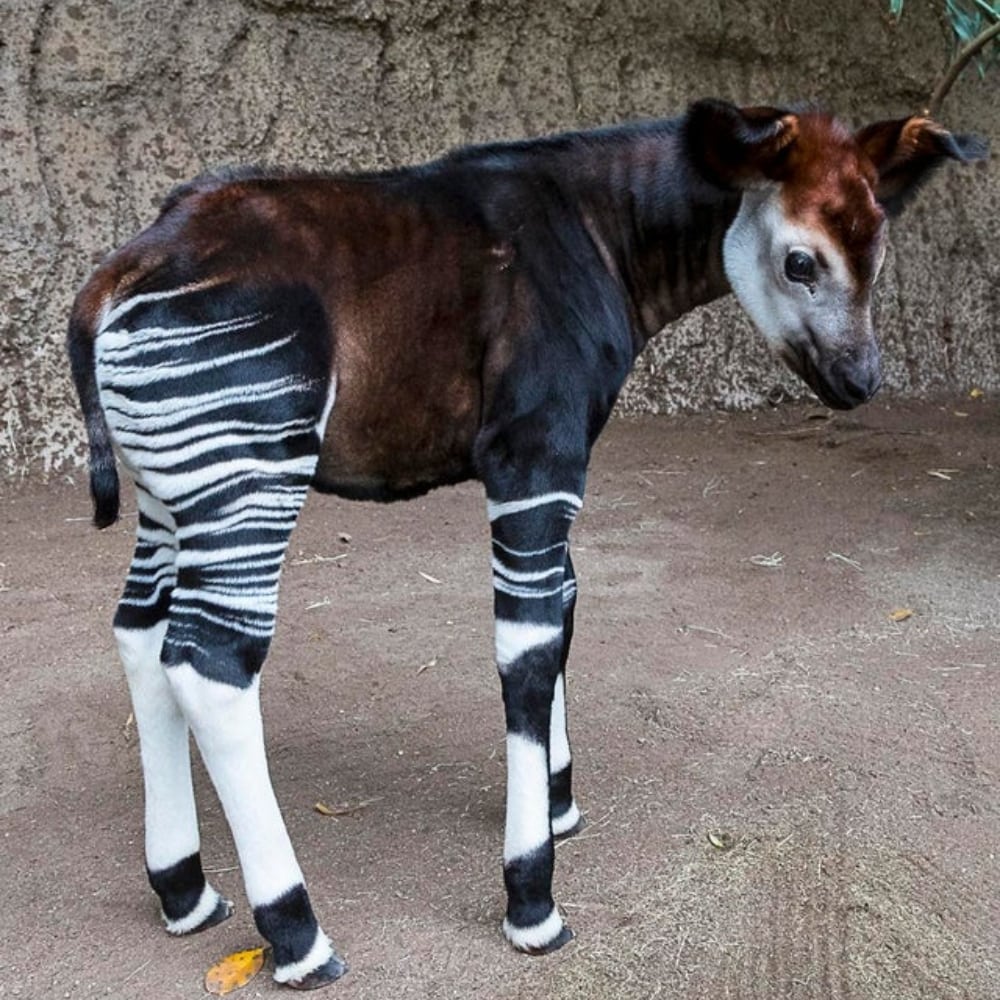
Baby Okapi
Baby Elephant
This is the very definition of a nosedive. We are only kidding, of course. The little guy in the photo is only getting used to his feet, but he is already doing a pretty good job. This is especially true when you consider that calves can walk within an hour or two of birth. In only two days, they gain enough strength to join the herd. Can you believe that? Humans, on the other hand, only start walking after a year or so.
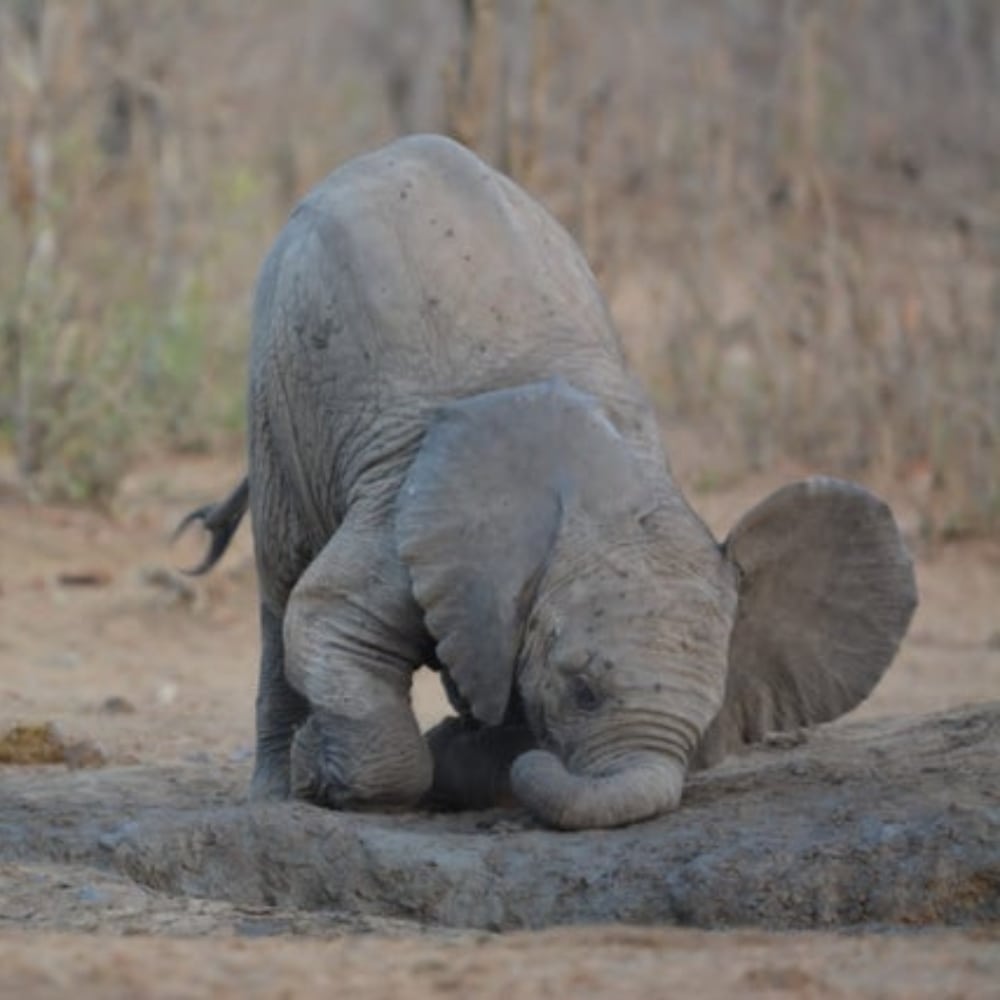
Baby Elephant
Baby Duck
Do you like ducks? It does not matter your answer because the wide-eyed fella in this photo is simply to die for. She can even fit in the palm of our hand. We have not even talked about how fluffy she is just yet! If we were lucky enough to be her owners, we would bring her no matter where we go. After all, there is no doubt in our minds that her mere presence alone is going to be therapeutic on its own.
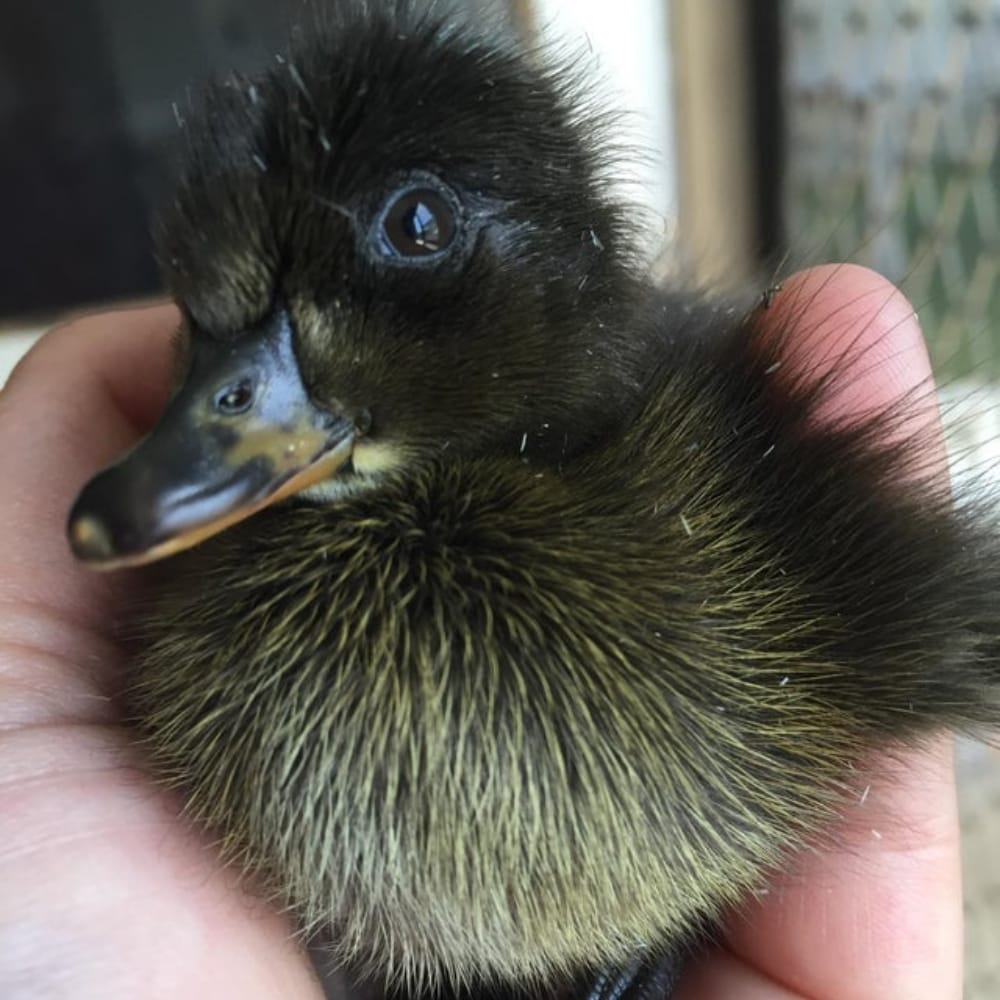
Baby Duck
Baby Seal
How can it get any more adorable than this? We are starting to think that is not possible at all. With their huge eyes and white coat, baby seals are too precious to resist. They are born on sea ice in the Arctic and North Atlantic Oceans. Even though pops do not have blubber yet, they gain weight thanks to the high-fat milk from their mothers. Once they get to 80 pounds, the mothers stop nursing them. After six weeks with no food, the baby seals then dive into the water to look for food on their own!
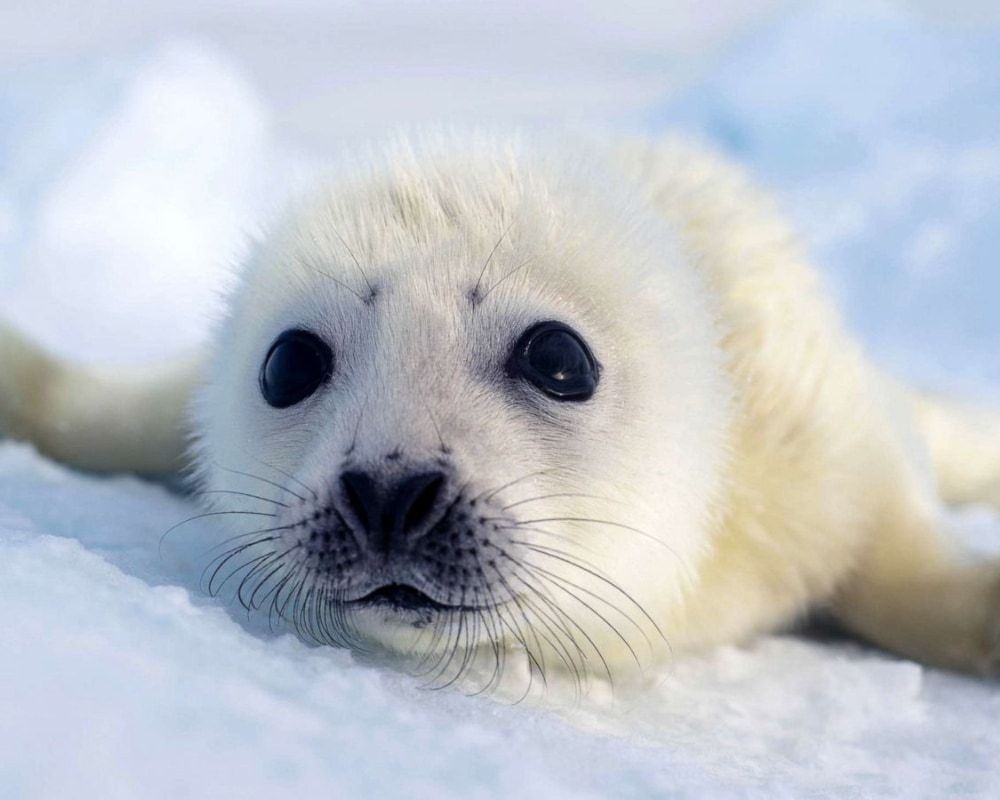
Baby Seal
Baby Frog
Let us be real. Amphibians are not exactly the most popular animals that we can think of. Despite this, you would be heartless if you deny that the baby frog in this photo is a cutie. Look at how adorable he is with his eyes closed, resting on top of the hand of his owner. How heartwarming! Even so, we want to know how on earth the guy keeps an eye on the frog. It is tiny and can hop away in a matter of seconds.
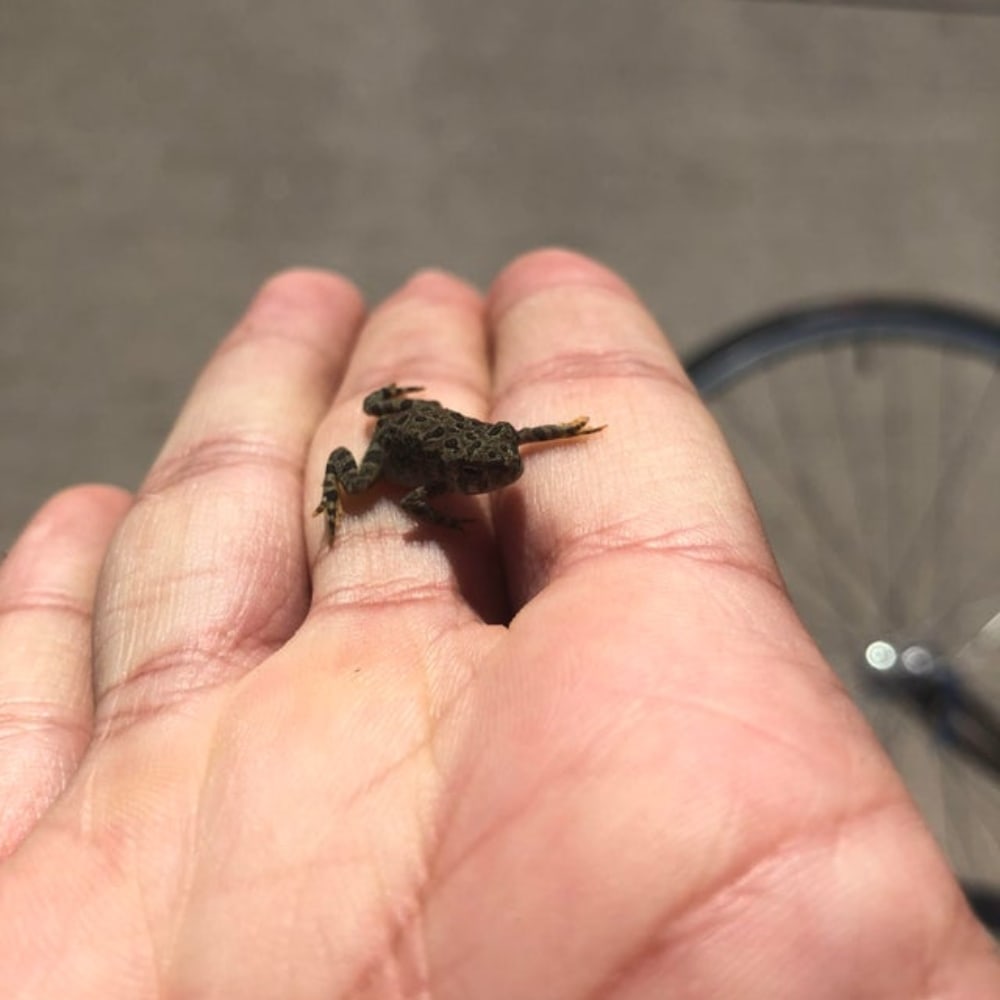
Baby Frog
Baby Pygmy Goats
When it comes to pets, the popular choices are dogs and cats. Some folks prefer to take a more unconventional tactic. A lot of individuals prefer rabbits. Others like parakeets. If you want something a little more unusual, you can go for a pygmy goat. They are adorable, and it turns out that they make for great pets as well. These animals are easy to handle and train, but they are friendly and like to play too!
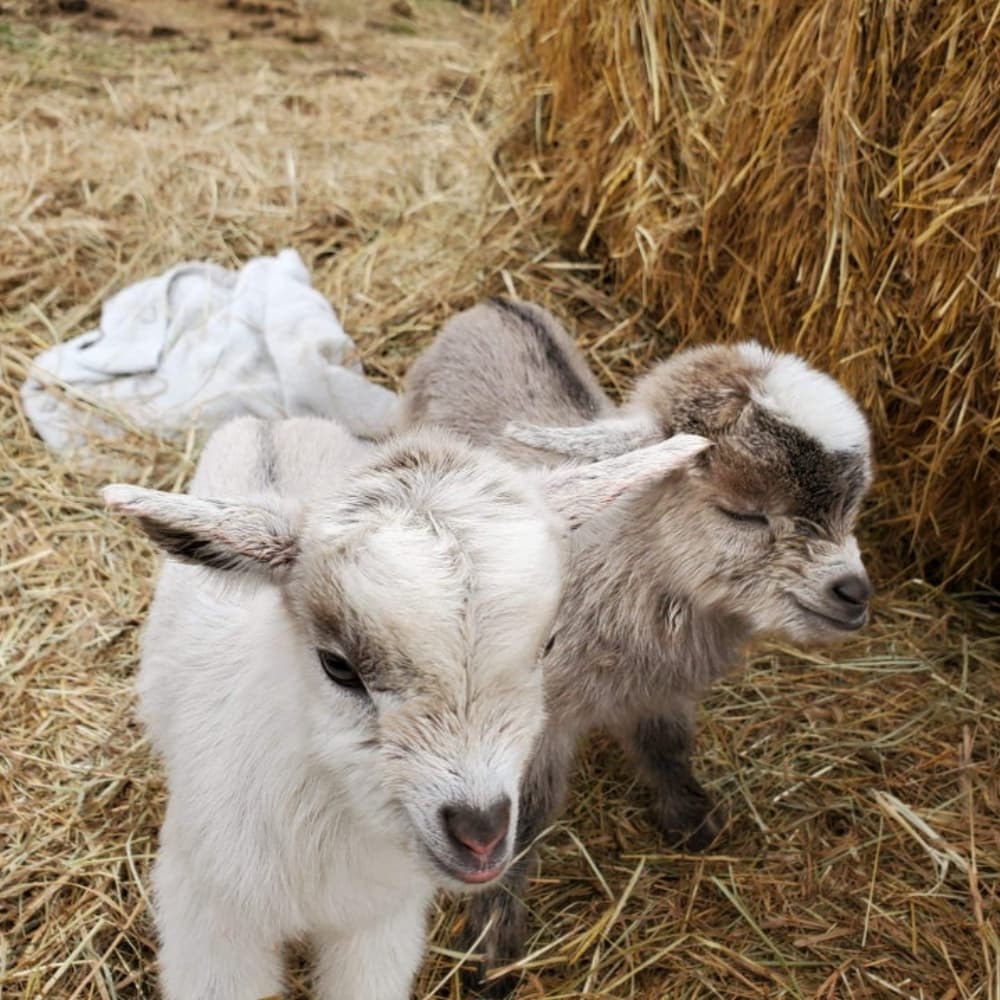
Baby Pygmy Goats
Baby Beaver
Don’t you just feel like hugging this little guy? It should be illegal for anything to look this cuddly. The beaver was munching on an afternoon snack when this was taken. Although it looks pretty mature, he is nothing more than a baby. Baby beavers are known as kits, and they are physically well-developed. This is the reason it can swim as soon as it is born. While this is the case, the baby likes to stay in or around the lodge for a month. This only means that their parents get more cuddles! We’re jealous.
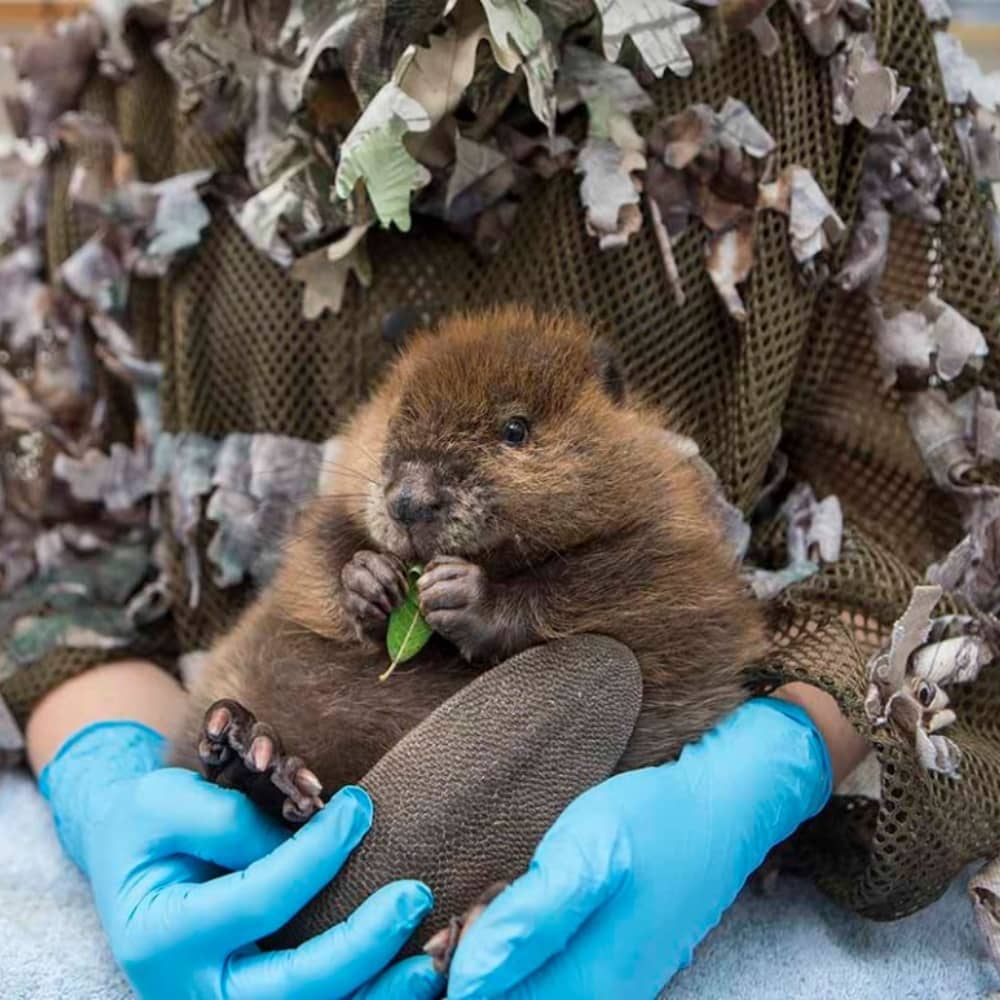
Baby Beaver
Baby Koala
How can you possibly deny how amazing koalas are? Even when they are adults, they remain super lovable. Wait until you see how precious they are when they are babies. You can take a look at this photo if you do not want to take our word for it. Also known as joeys, baby koalas only weigh around a gram at the time of birth. If you want to look at them in person, you have to head down to Australia.
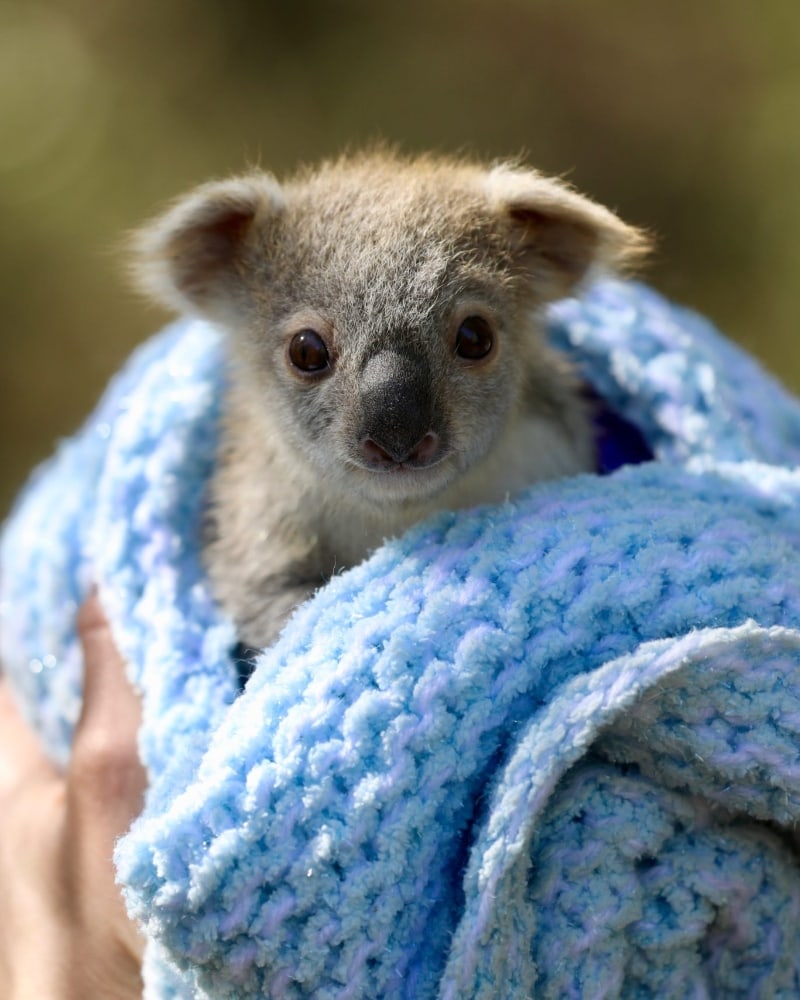
Baby Koala
Baby Cow
Props to the person who caught this moment on film! It is nice to see such an intimate scene between the mother cow and her calf. While the baby looks small compared to her, the truth is that it must already weigh anywhere from 60 to 100 pounds by this time. An hour after a calf is born, it gains the ability to walk, nurse, and stand. Things are very different for us humans, as you definitely already know by now. This only makes these mighty creatures even more majestic in our eyes.
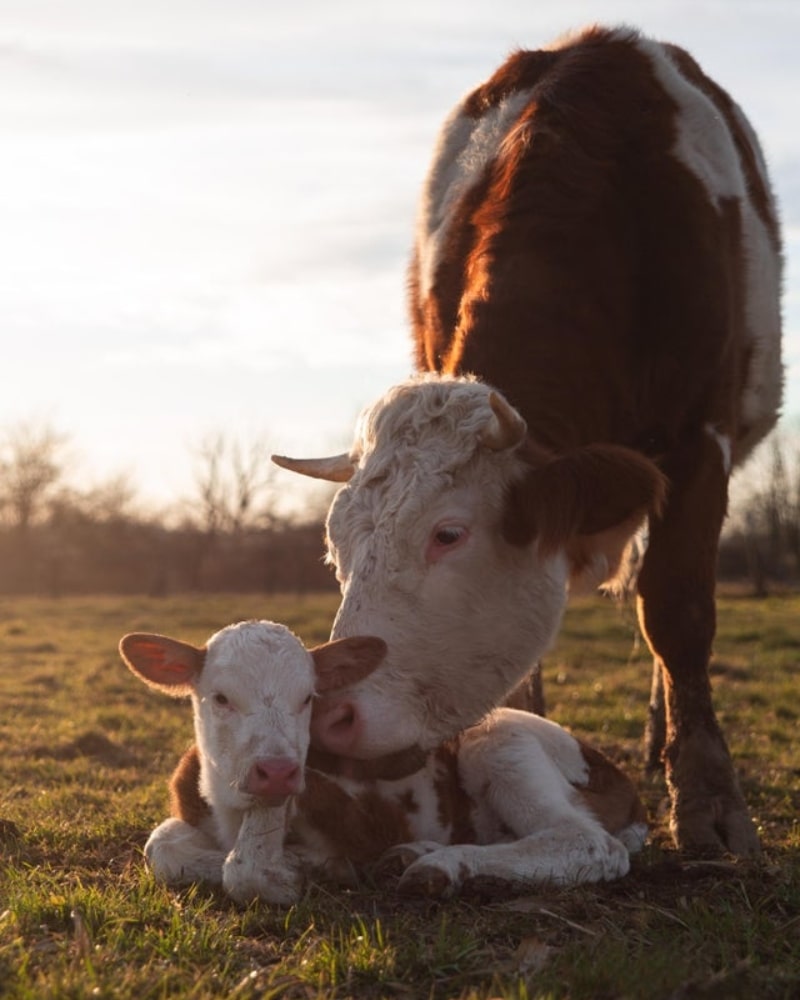
Baby Cow
Baby Valais Blacknose Sheep
This is a photo of a Valais Blacknose Sheep. It is a breed of domestic sheep that was found in the snowy Valais peaks in Switzerland. These animals have black patches on their ears, eyes, knees, nose, and feet. Let us not forget that thick mane of wool keeps them warm no matter how harsh the winters can get. They are very rare and can only be found in Switzerland and Germany. They have been getting more popular, however. This is the reason they are now bred in different areas across the globe.
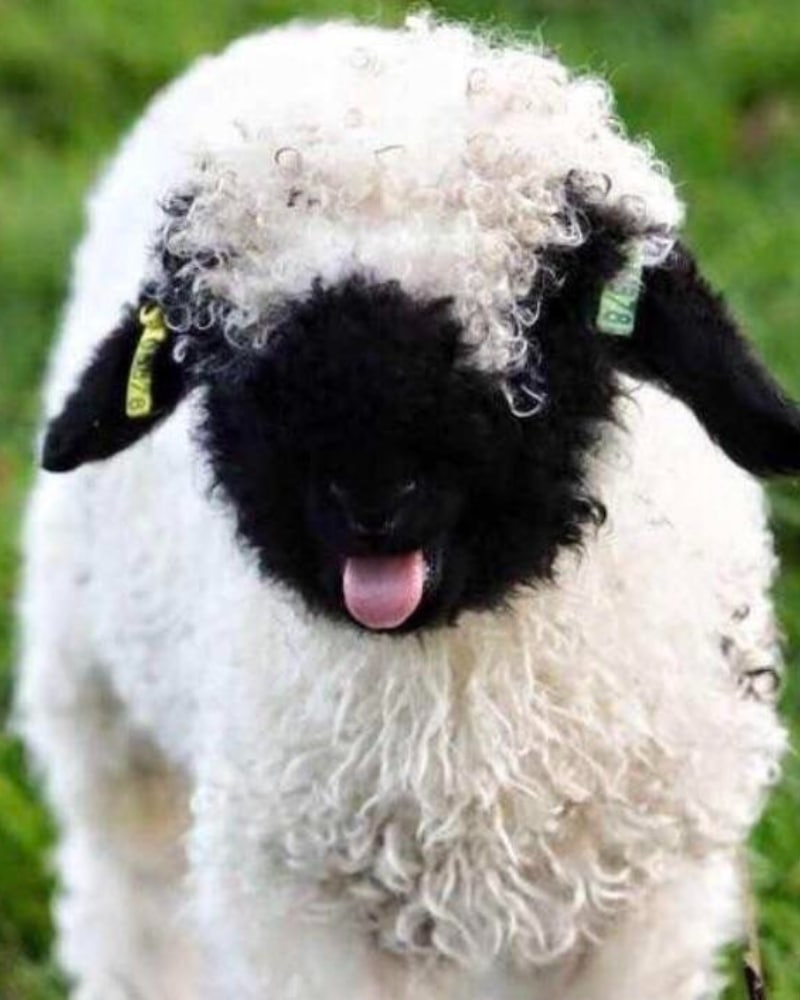
Baby Valais Blacknose Sheep
Baby Sugar Gliders
First of all, sugar gliders are teeny tiny. With that said, the babies are even smaller than usual! We melt into puddles the moment we see one of these cuties. It does not matter whether they are adults or joeys! They are way too cute to handle. If you want to know why they are called sugar gliders, they have a predilection for sugary foods like nectar and sap, as well as a tendency to glide through the air.
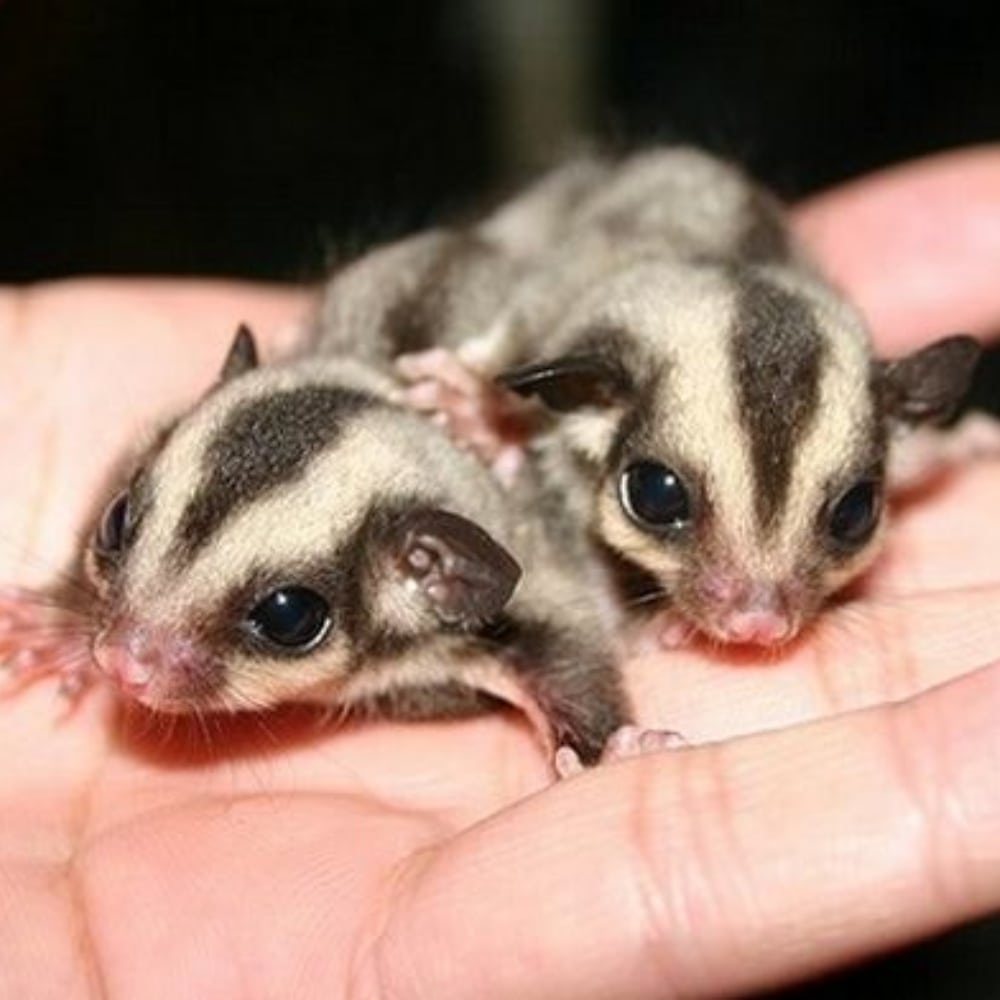
Baby Sugar Gliders
Baby Raccoon
Most of the time, we would cringe the moment we see a raccoon. This is especially true when we spot them eating out of the trash bins late at night. Even though we have bad experiences with them, how can you deny the cuteness of this baby? They have also become popular among pet owners. Also known as cubs or kits, baby raccoons can sound like newborn humans when in distress. The craziest thing about them would be those dexterous paws that they can use to open doors and twist handles!
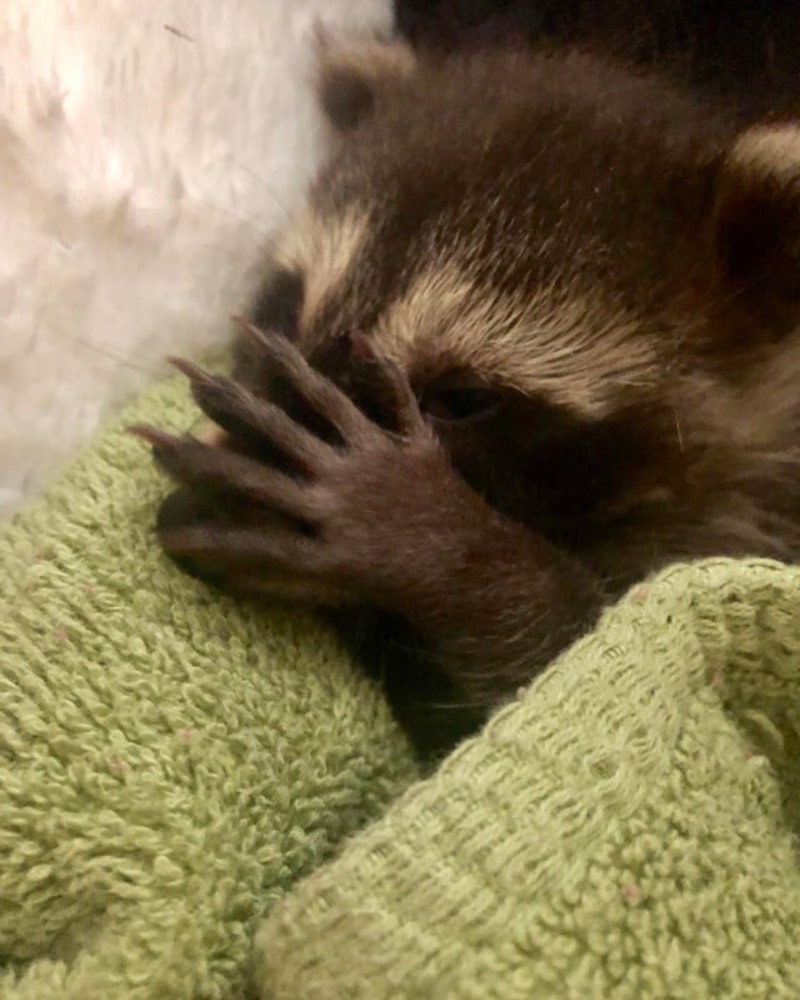
Baby Raccoon
Baby Rabbit
As we all know, baby rabbits are precious animals. They have big floppy ears, a cute hop, and velvety fur. How can you think that they are anything but cute? They are sensitive animals with great personalities. Rabbits are more like cats and dogs than you think. For one thing, they get bored in no time and require a lot of companionship and toys to be happy. We are ready to give them all the TLC they need.
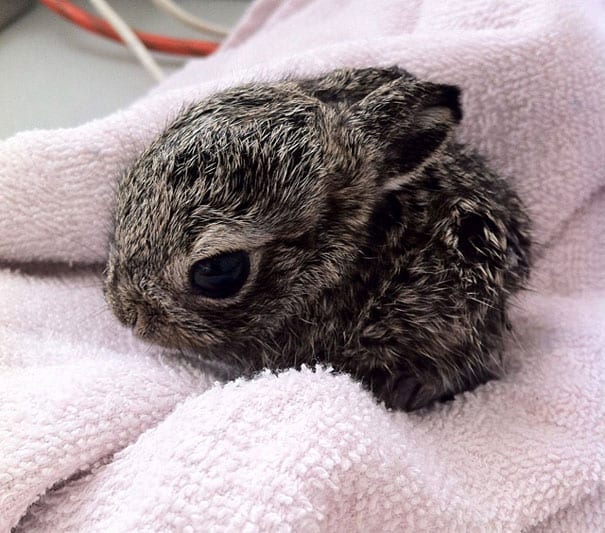
Baby Rabbit
Baby Skunk
You should stay away from an adult skunk if you do not want to get attacked with smelly spray. Even so, it would be much harder to leave a baby skunk alone. Also known as kits, baby skunks only open their eyes three weeks after their birth. After this period of time, they develop quickly and have babies of their own within ten to twelve months. Even though they are adorable, you should avoid petting them!
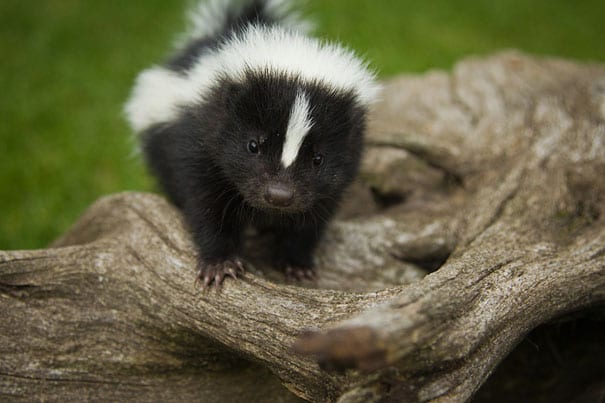
Baby Skunk
Baby Panda
What do you think of this baby panda? In our head, he is belting out “Head, Shoulders, Knees, and Toes” as loudly as he can. It is a shame that they are a super endangered species since they can’t survive away from the super-specialized and increasingly disappearing Chinese bamboo forests. It is a good thing that zoos in different parts of the world work hard to preserve them. We would do anything to hug this guy!
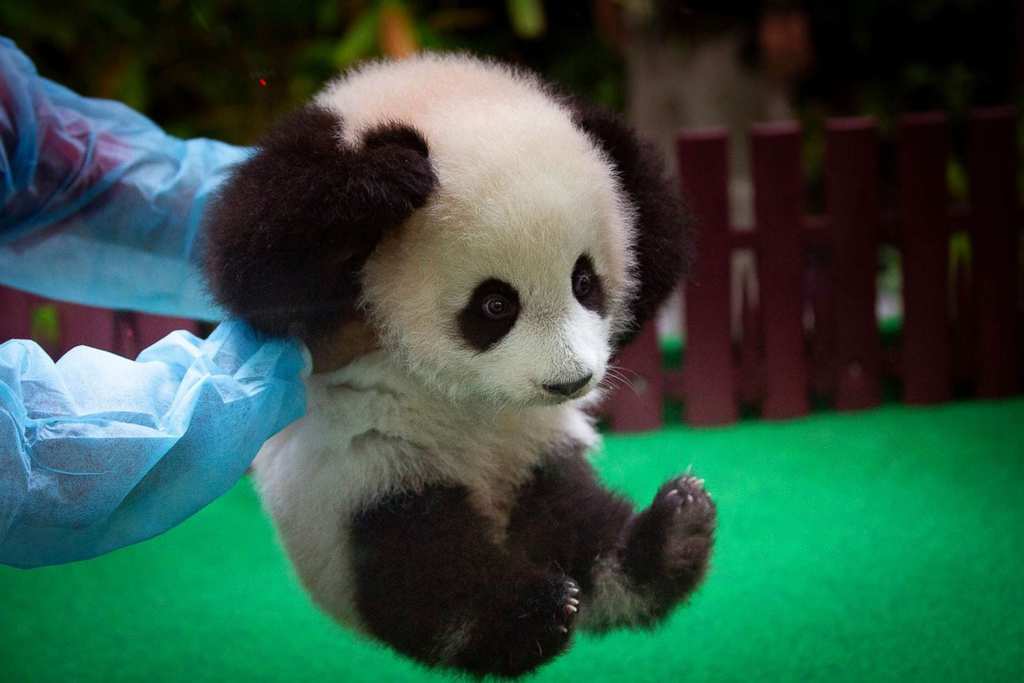
Baby Panda
Baby Prairie Dog
The prairie dog is not a popular creature, but they are fascinating. For one thing, their mating season is only an hour-long per year. They dig complex tunnel systems underground and have the most advanced vocabulary in the animal kingdom to be decoded. Their squeaks might sound repetitive and simple to us, but their calls actually convey descriptive details of what they see. For example, they can use it to describe a tall man in the color blue. As you can see, these creatures have both beauty and brains.
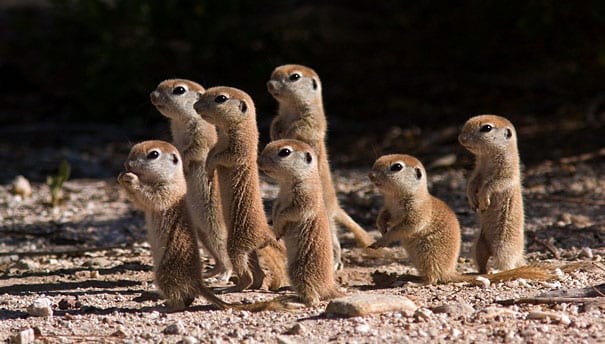
Baby Prairie Dog
Baby Deer
Isn’t this deer the cutest thing you’ve ever seen? This is a Chinese water deer in particular, which is known for its rare fangs that grow as they age, earning them the moniker “vampire deer.” While scary, these fangs are mostly only for display. However, although these delicate animals are still small and cute, they are toothless and incredibly vulnerable, with up to 40% of newborns dying within the first month of existence.
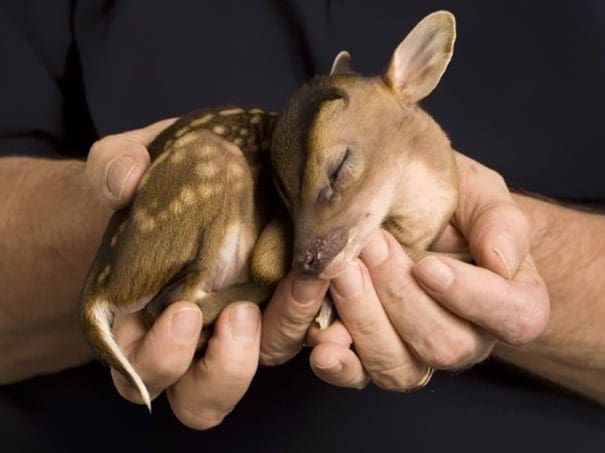
Baby Deer
Baby Anteater
Isn’t this baby anteater adorable? The anteater is a common nickname for four living mammal species in the Vermilingua suborder. The literal sense of the term is “worm tongue,” which explains how anteaters feed very well. Ants and termites are their favorite foods. They’re similar to sloths and armadillos. It turns out! When you see how they appear, it makes sense. The three species have a lot in common.
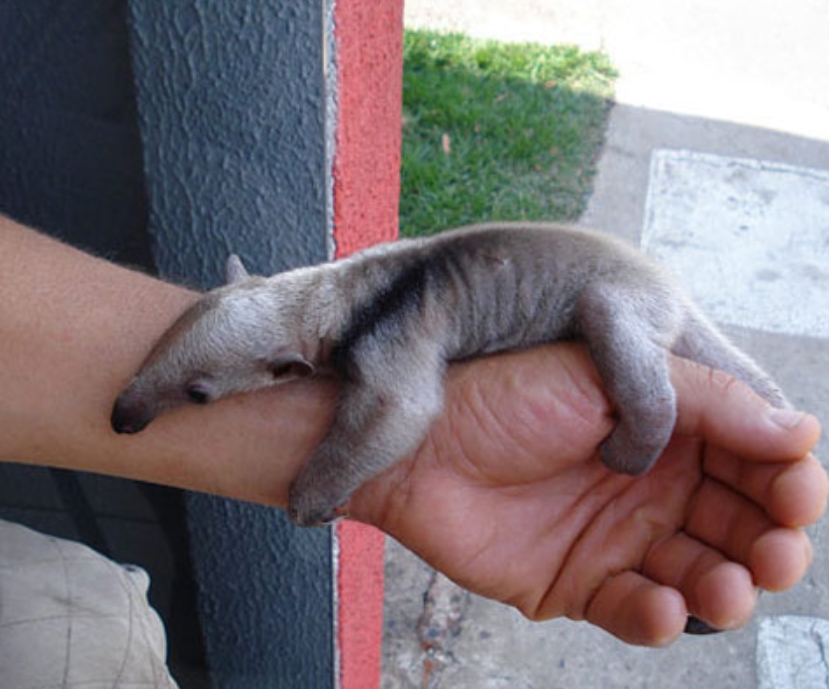
Baby Anteater
Baby Octopus
To be frank, octopuses are a big hit. They’re brilliant and can change their shapes. Can you believe how small they were when they were babies? This tiny creature is perched on the tip of someone’s finger, giving it a larger-than-life appearance. Octopuses can be found in various environments, including coral reefs, pelagic waters, and the seabed. They either eject ink, use camouflage to hide, or use danger displays to protect themselves from predators.
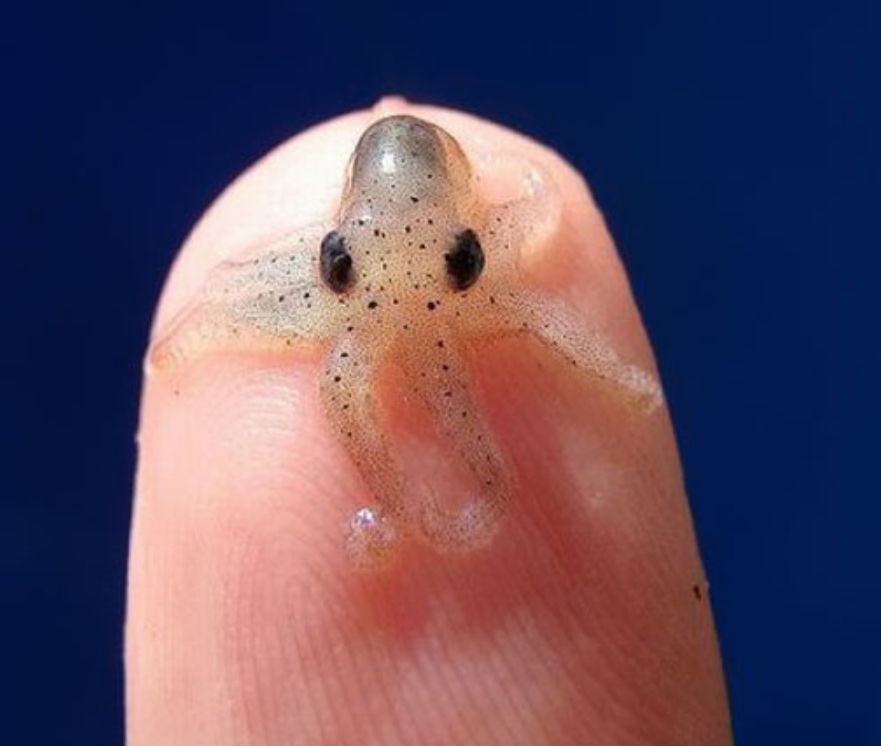
Baby Octopus
Baby Puffer Fish
Anyone who’s seen the hit TV show Spongebob Squarepants is familiar with pufferfish behavior. Or at least a smidgeon of it. The majority of pufferfish species are toxic, and they are among the world’s most poisonous vertebrates. To ward off any predators, this fish has some special natural defenses. It can use its tail for a quick evasive burst of speed to get away from danger, and if that fails, it can fill its elastic stomach with water (or air if it’s not in the water) until it expands and becomes spherical in form.
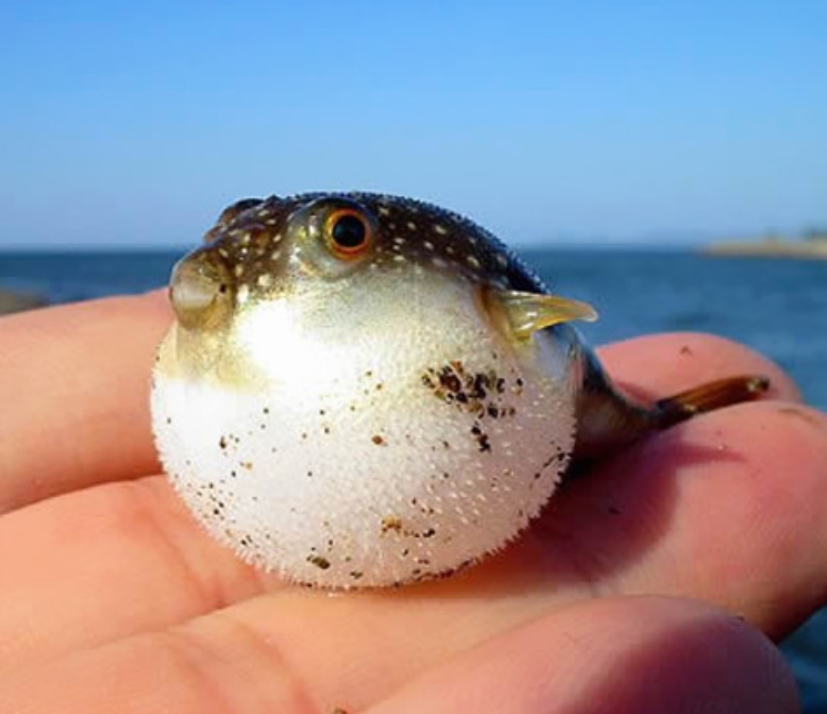
Baby Puffer Fish
Baby Walrus
The big flippered marine animal is just as cute as the other baby animals on this list when it is tiny. These animals can grow to be very large as adults. In the Pacific, an adult male walrus can weigh over 2,000 kilograms (4,400 pounds). Walruses spend most of their lives on the sea ice, searching for benthic bivalve mollusks to eat. They usually live in shallow waters above continental shelves.
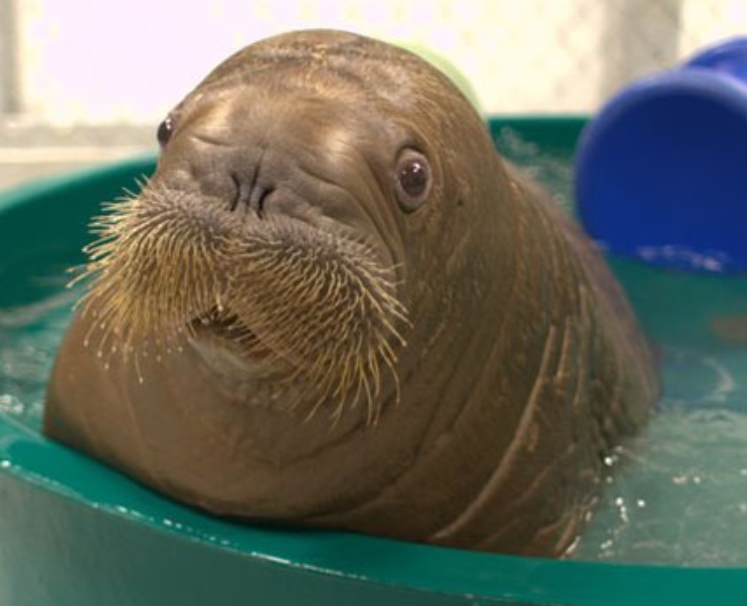
Baby Walrus
Baby Chinchilla
A chinchilla is a cute little crepuscular rodent. Chile now has the only wild chinchilla colonies in the world. They’ve been identified in Peru, Bolivia, Argentina, and Chile in the past. Chinchillas have the densest fur of any terrestrial mammal. Unfortunately, humans hunted these creatures for their ultra-soft fur, and they were listed as endangered in 2016.
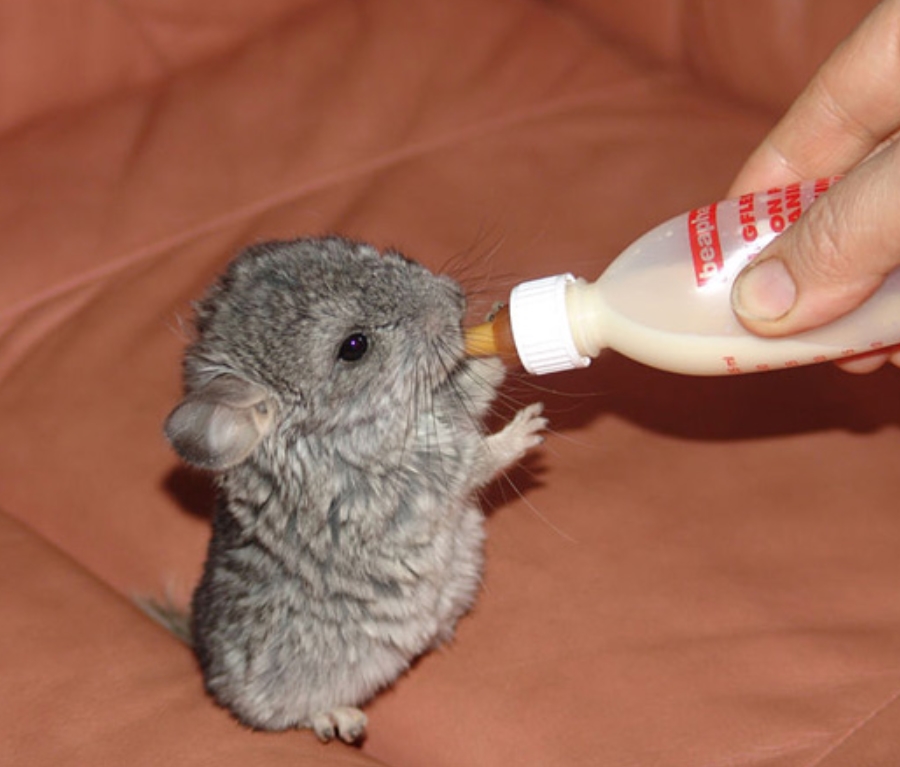
Baby Chinchilla
Baby Dik Dik
Dik-dik refers to one of four small antelope populations that are found in eastern and southern Africa. The sound the females make when they’re in trouble is the source of their unusual name. It’s the sound of their alarm clocks. Male and female dik-diks also produce a shrill, whistling sound in addition to the alarm call made by the females. When they’re in danger, they use these noises to alert other animals of predators.
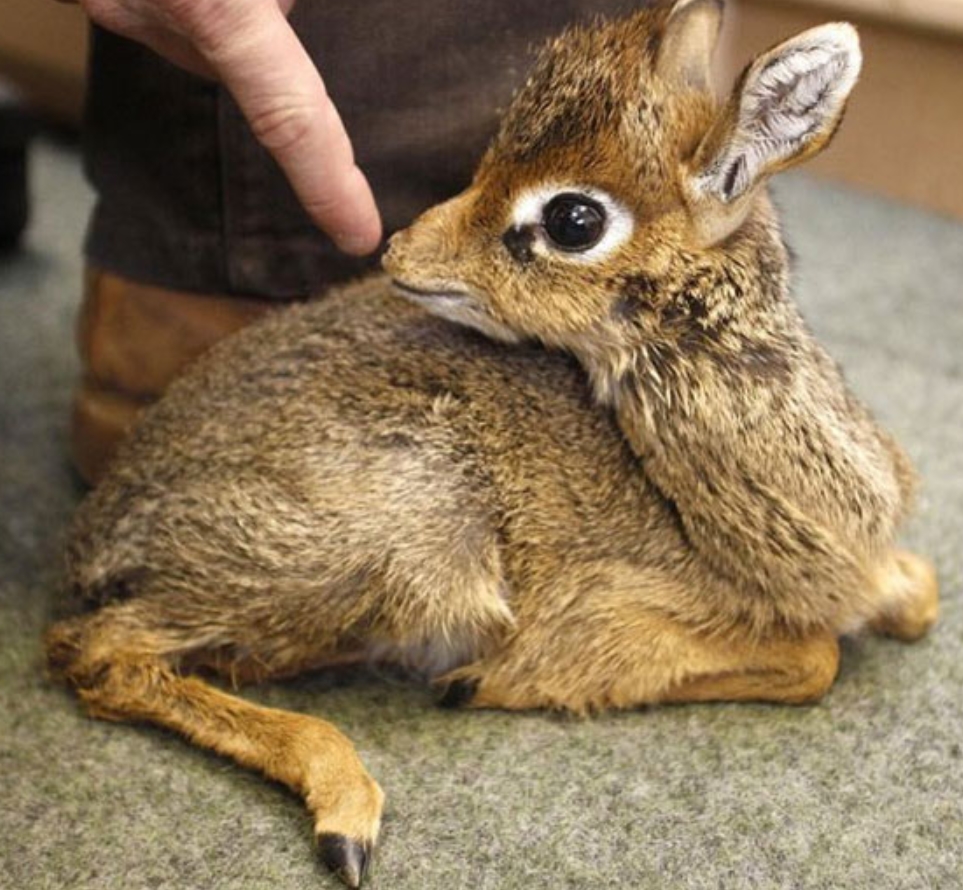
Baby Dik Dik
Baby Penguins
Penguins are a group of flightless marine birds. They have contrasting dark and white plumage and flippers for swimming and are well-adapted to life in the sea. They eat krill, fish, squid, and other sea creatures that they capture while swimming underwater. They spend about half of their lives underwater and the other half in the sea. Even though all penguins are native to the Southern Hemisphere, they live in cold climates. A few species can be found in the far south.
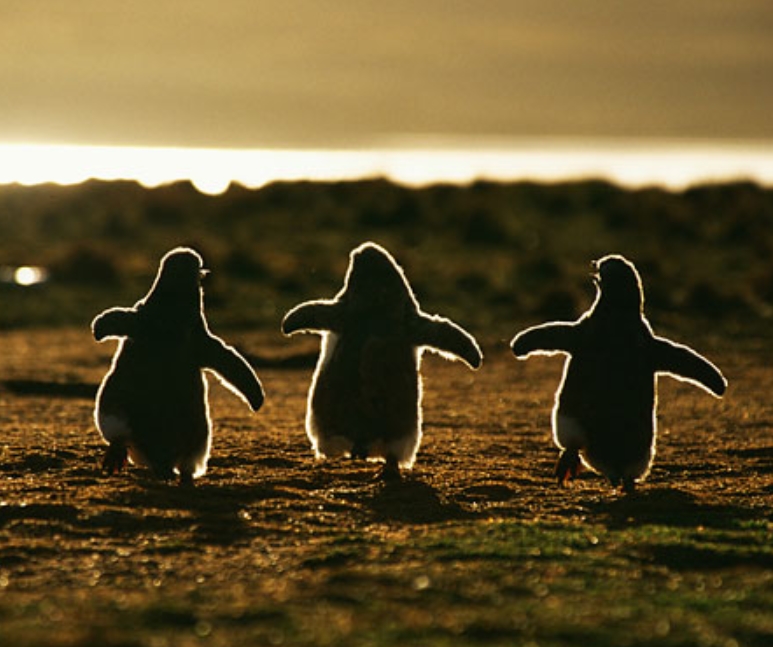
Baby Penguins
Baby Donkey
A domesticated member of the horse family, donkeys, has been used as working animals for thousands of years now. There are over 40 million donkeys in the world – mostly in underdeveloped countries. There, they are used mostly as draught or pack animals. Typically, working donkeys are associated with those who live below subsistence levels. There aren’t very many donkeys being kept as pets in developed countries.
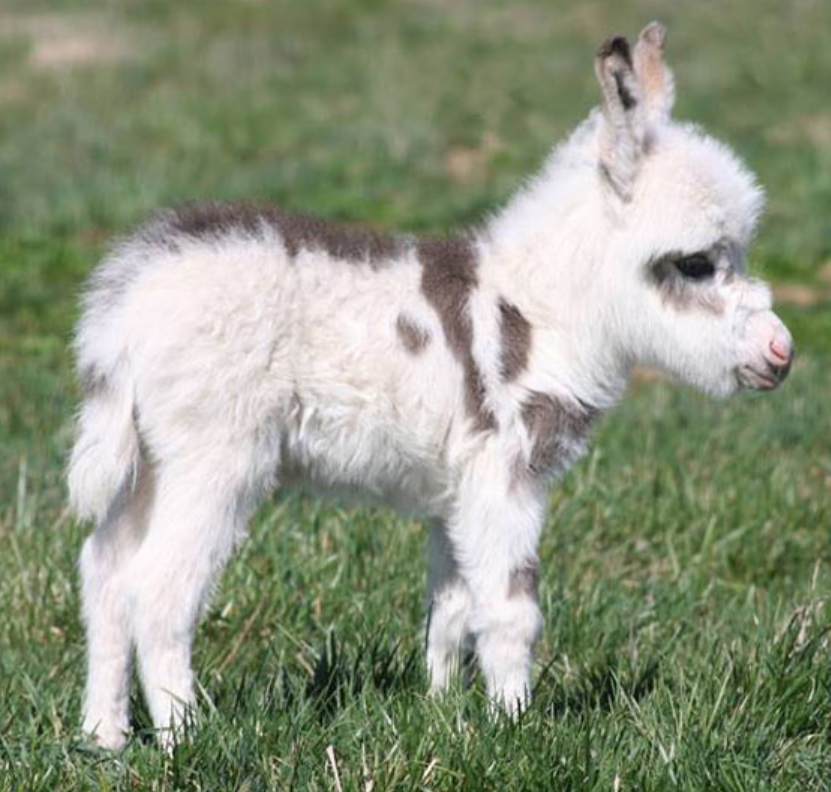
Baby Donkey
Baby Otter
Otters are, without a doubt, one of the loveliest creatures on the planet. Fish and invertebrates are the main sources of food for these semi-aquatic mammals. It takes a year for an otter pup to strike out on its own after it is born. It will be able to swim when it is two months old. Typically, otters are very playful creatures that enjoy frolicking in the water with other pups. One of the fascinating features of otters is their webbed paws.
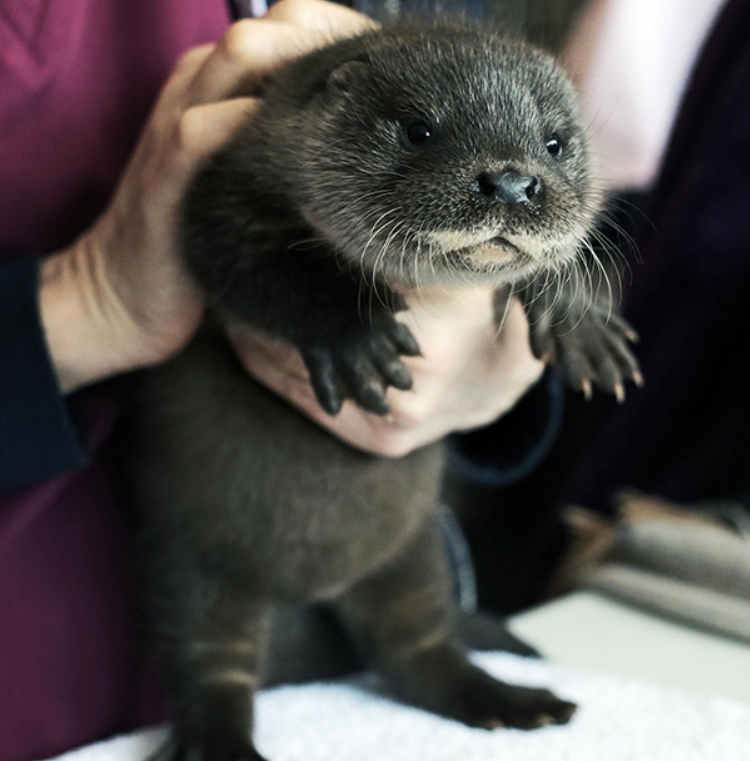
Baby Otter
Baby Black Footed Cat
This cute little cat isn’t as naive as she seems. The small-spotted cat, also known as the black-footed cat, is Africa’s smallest wild cat. Only the soles of its feet are black or dark brown, despite its name. It already has a perfect camouflage system in place, thanks to its patterned fur – particularly on moonlit nights. It consumes 40 different vertebrates and has the ability to kill up to 14 small animals each night.
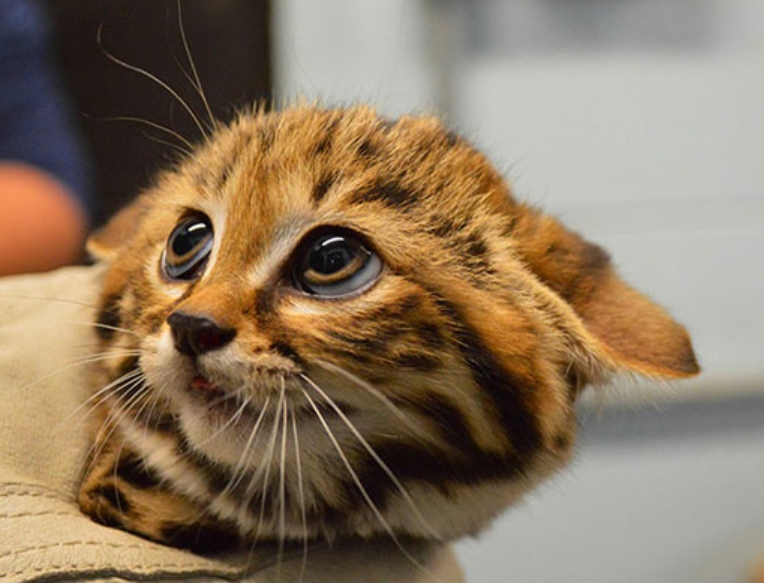
Baby Black Footed Cat
Baby Eastern Quoll
The eastern quoll is an Australian native cat that used to be known as the eastern native cat. They’re popular in Tasmania and are widely distributed. Though they were once thought to be extinct on the mainland, they were reintroduced into fenced sanctuaries in 2016 and into the wild in March 2018. They are distinguished from other medium-sized carnivores by their distinctive black-and-white fur coat.
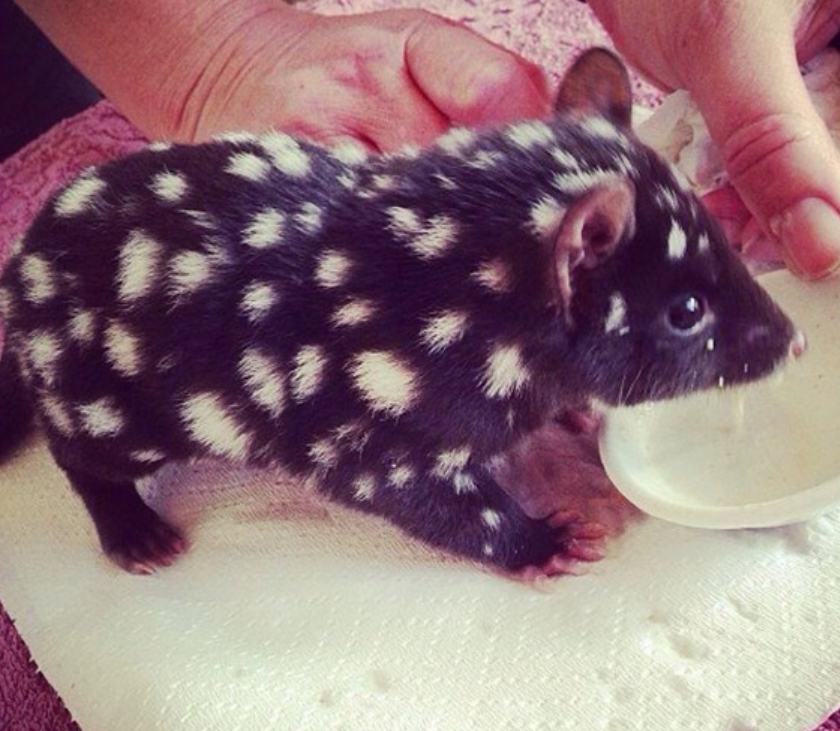
Baby Eastern Quoll
Baby Pangolin
Pangolins are a type of pangolin that can be found in Asia and Africa. These cute creatures come in various sizes, ranging from 30 to 100 cm (12-39 inches). Pangolins’ skin is covered in thick, protective keratin scales. They are, in truth, the only mammals known to have this feature! Depending on the species, they prefer to live in hollow trees or burrows. The majority of these tiny creatures’ diet consists of ants and termites.
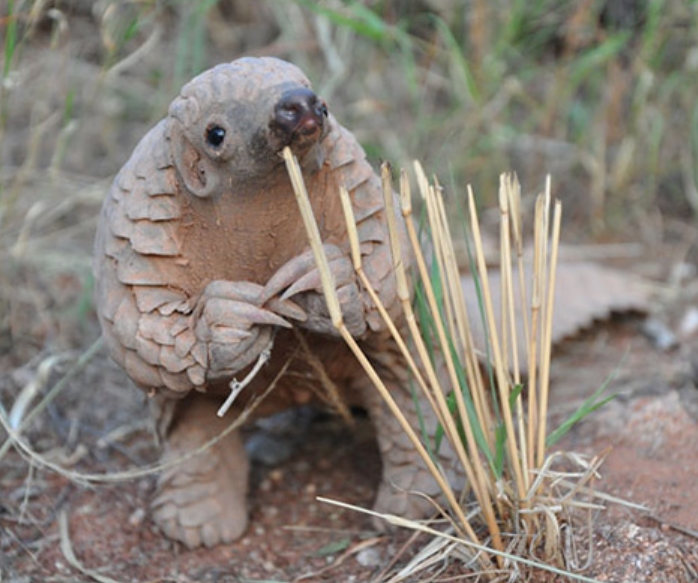
Baby Pangolin
Baby Reindeers
Reindeer are a favorite of many people. The first thing that comes to mind when we see them is, of course, Rudolph, but the cute animals are much more than that. This animal can be found in the Arctic, subArctic, tundra, boreal, and mountainous regions of northern Europe, Siberia, and North America in various forms and species. However, since their numbers have dwindled over time, they have been classified as “functionally extinct.”
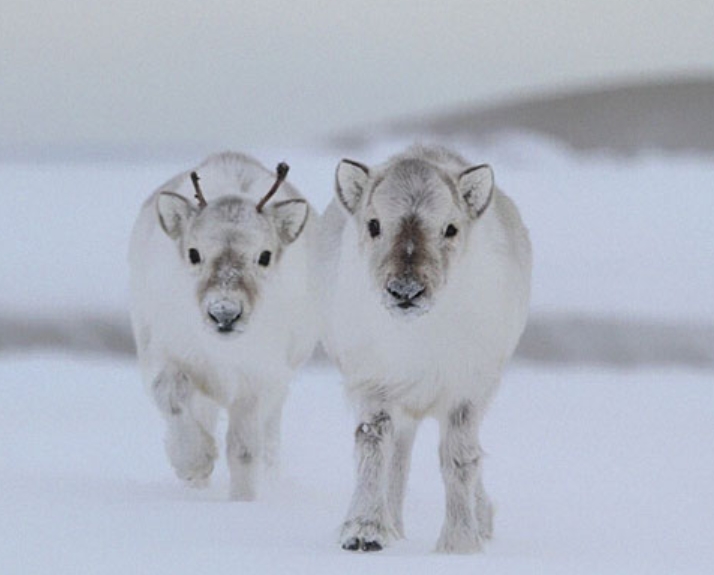
Baby Reindeers
Baby Meerkat
This tiny mongoose is usually found in southern Africa, and we’re pleased to report that they’re not in imminent danger of extinction. Beetles, small birds, reptiles, and even plant material are among the foods consumed by the cute little creature. Meerkats are very social animals, so they live in groups of two to thirty people and have rocky home ranges. They also dig their own burrow systems, which can be up to 5 meters in diameter and have about 15 openings.
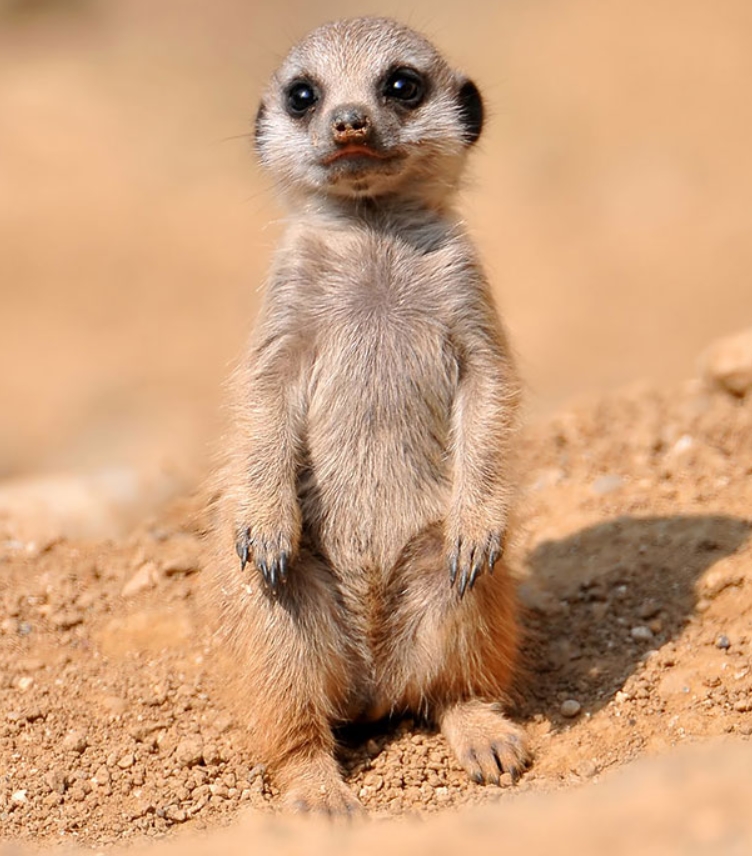
Baby Meerkat
Baby Red Panda
The red panda is a cute little creature found in the eastern Himalayas and southwestern China. Despite its name, the red panda is not closely related to the giant panda. Unfortunately, it’s classified as endangered because only about 10,000 mature individuals are left in the wild. An arboreal species, the red panda, eats bamboo mostly and eats items like eggs, birds, and insects.
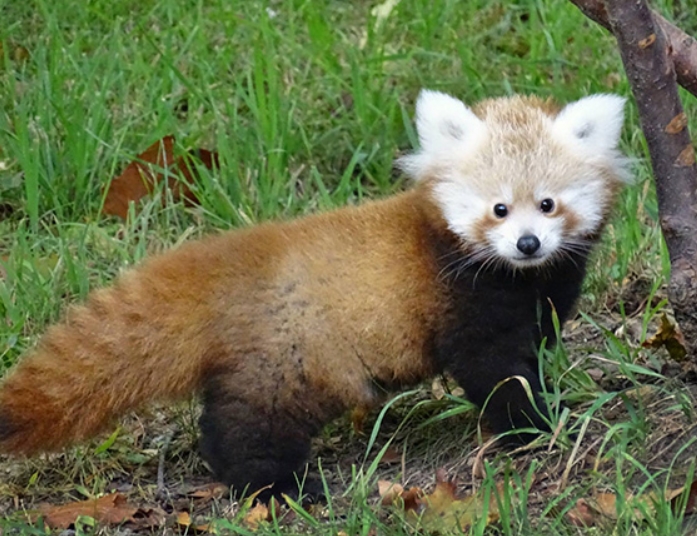
Baby Red Panda
Frogmouth Chick
The fact that this nocturnal bird is similar to nightjars makes sense when hearing the word. They can be found from the Indian Subcontinent to Australia and Southeast Asia, and Southeast Asia. Their name may seem strange at first, but there is a reason for it. The big flattened hooked bill and massive frog-like gape have earned them the tag. This is how they catch and consume insects. They aren’t magnificent flyers, in truth.
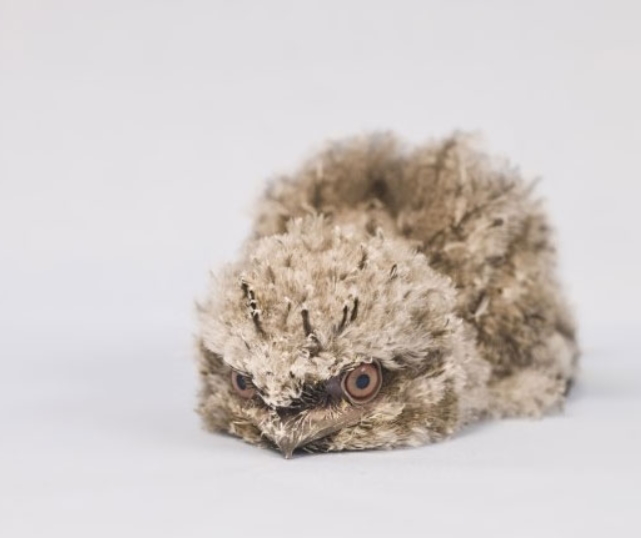
Frogmouth Chick
Baby Wombat
Wombats are short-legged, muscled Australian creatures. They have short, stubby tails and grow to be around one meter (40 inches) long. These species are adaptable and climate tolerant, and they live in forested, mountainous, and heathland environments. Even though they are most active at dusk and dawn, they do come out to eat on cold or overcast days.
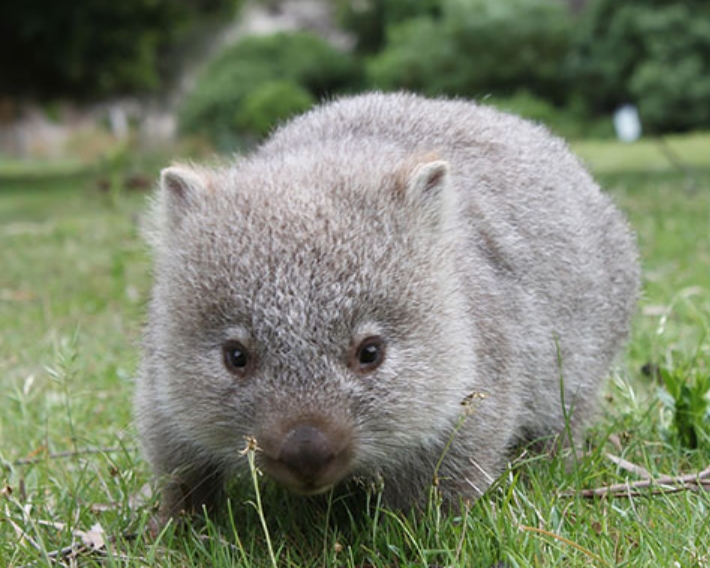
Baby Wombat
Baby Tasmanian Devil
Tasmanian devils are carnivorous marsupials that were once only present on the mainland of Australia but are now found in the wild on Tasmania. In reality, a limited breeding population has been reintroduced to New South Wales. A Tasmanian devil is distinguished by its stocky and muscular build and its black fur and pungent odor. The animal had a piercing screech and a sharp sense of smell, which is used to track down its prey.
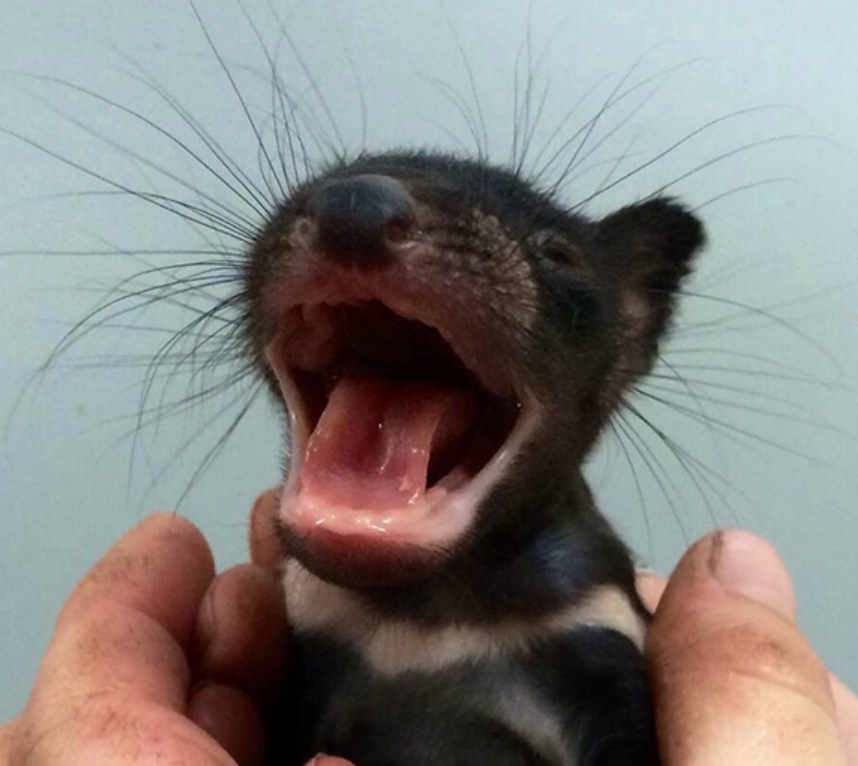
Baby Tasmanian Devil
Baby Muskox
This cute little thing is an Arctic hoofed mammal named for the heavy scent released by male muskoxen during the seasonal rut. The muskox has a miserable name due to its thick coat. It’s called “umingmak” in Inuktitut, which means “bearded one.” That may not sound horrible, but the Woods Cree names “mâthi-môs,” and “mâthi-mostos” mean “ugly moose” and “ugly bison,” respectively.
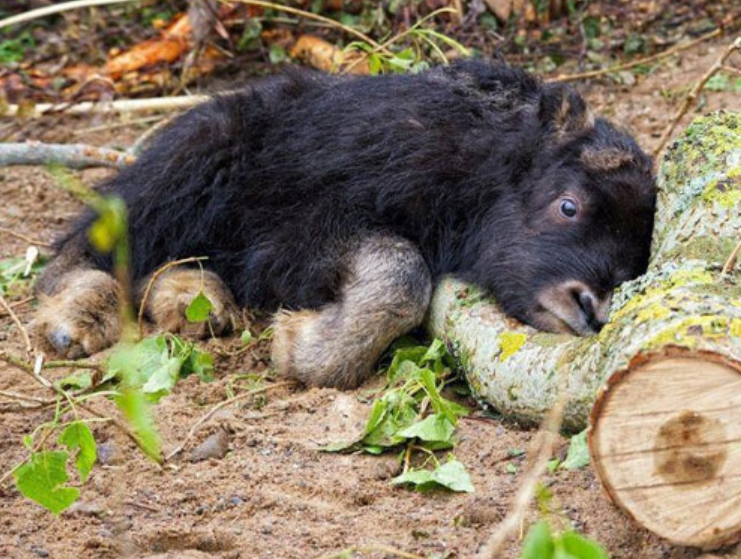
Baby Muskox
Baby Boar
Wild boars are found in Eurasia and North Africa. It has recently made its way to the Americas and Oceania. This animal is now one of the most widely distributed mammals on the planet! Who wouldn’t want to see more of these adorable creatures? This animal is extremely adaptable to new environments, allowing it to survive almost anywhere. In certain areas of its introduced range, it has also become an invasive species.
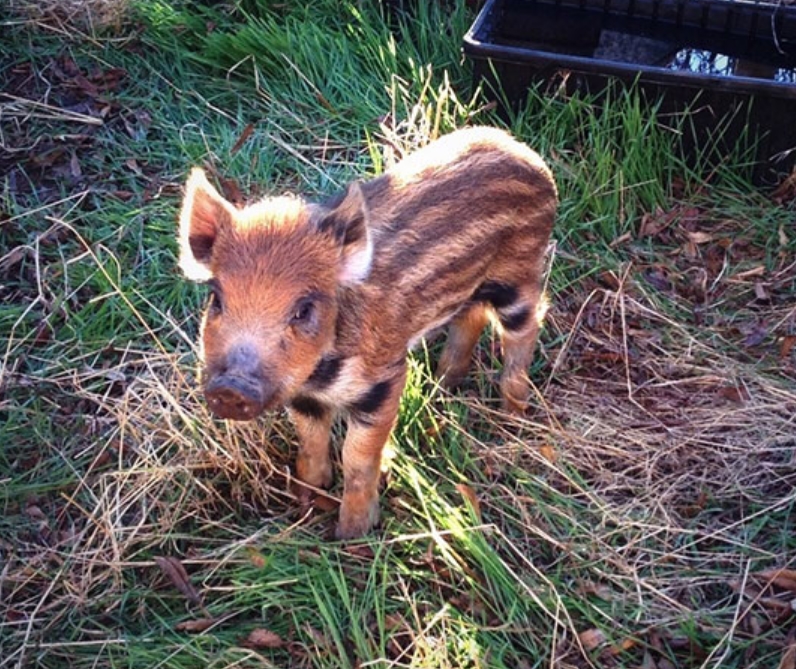
Baby Boar
Baby Colugo
Southeast Asia is home to these gliding mammals. It turns out that this cute little creature is the most capable glider of all the gliding mammals on the planet. The Colugo’s face, feet, and tail are connected by a fur-covered membrane that allows it to glide through the air for up to 200 meters between trees. Even though they are not lemurs, Colugos are also known as flying lemurs or cobegos.
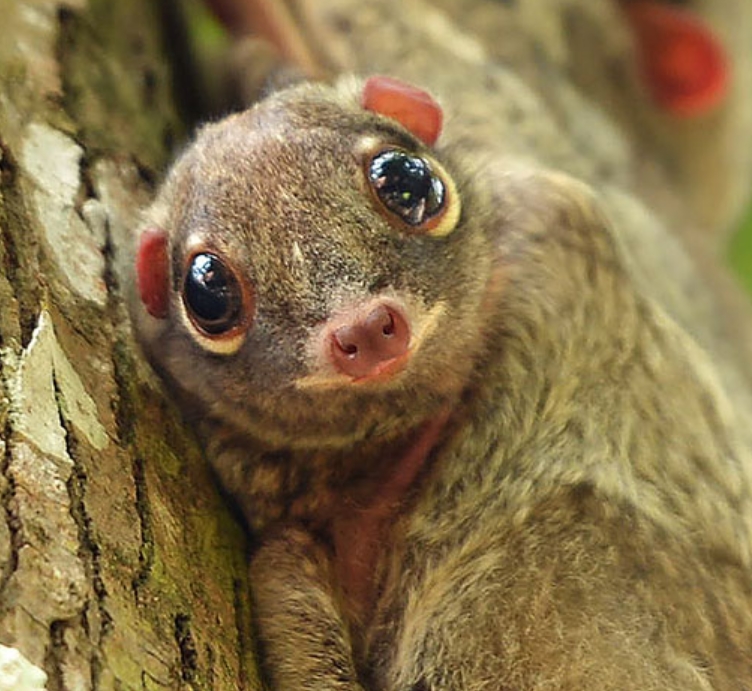
Baby Colugo
Baby Bison
The American bison and the European bison are the two major species of bison today. You can probably guess where both of these are located: America and Europe. Since it was a major resource for both food and raw materials for indigenous peoples of North America, the American bison was nearly extinct in the late nineteenth century. In reality, Native Americans held the bison in high regard and treated it as a sacred animal.
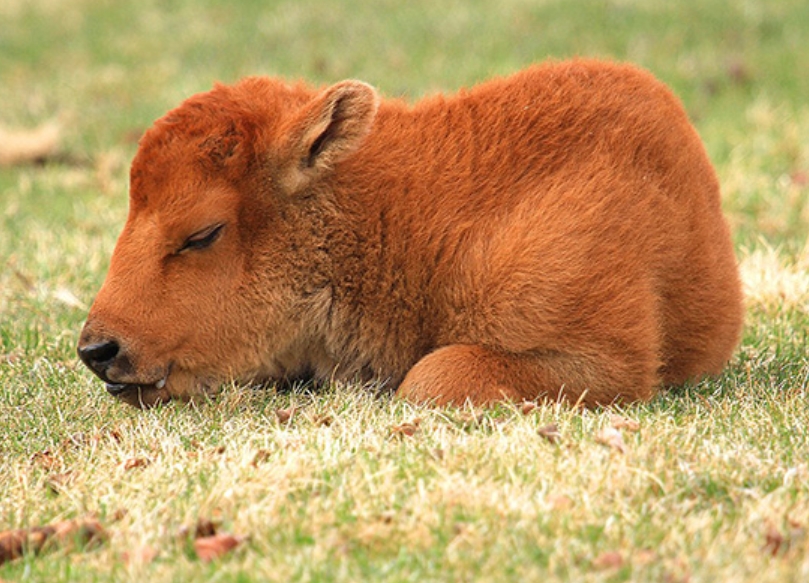
Baby Bison
Baby Starfish
Isn’t it amazing how small a starfish is when it’s young? There are over 1,500 species of starfish, also known as sea stars, in the world’s oceans. Starfish can be found worldwide, from the tropics to the icy waters of the poles. They’re invertebrates that live in the sea and have a central disk and five sides. Some creatures, on the other hand, have more weaponry. Many starfish are brightly colored, ranging from orange to red, grey, and blue.
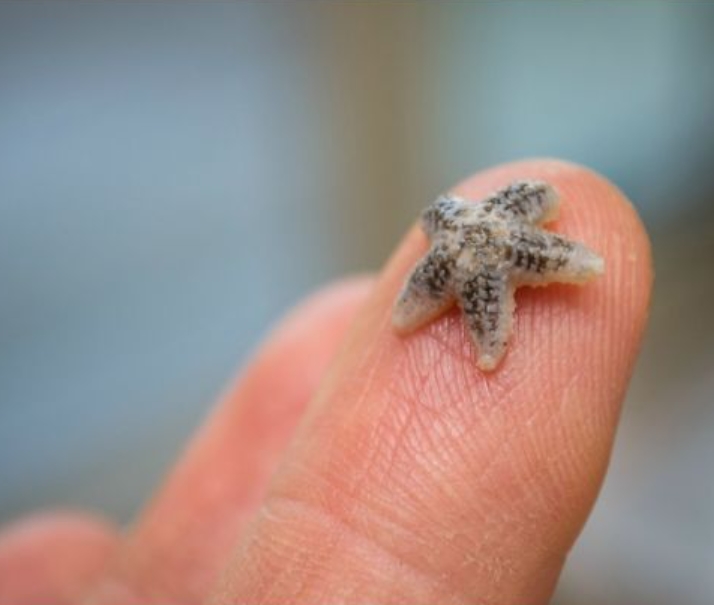
Baby Starfish
Baby Parrots
When it comes to parrots, it’s important to remember that there are approximately 398 different species. Tropical and subtropical regions are the most common habitats for this bird. Parrots often consume seeds, nuts, vegetables, buds, and other plant materials. A few species can consume rodents and carrion on occasion. Almost all parrots tend to lay white eggs in tree hollows, from which their young hatch.
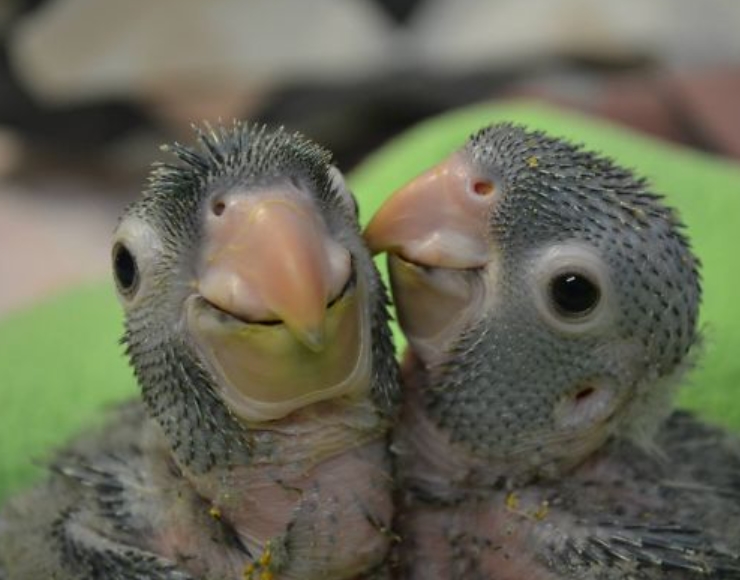
Baby Parrots
Baby Klipspringer
Eastern and southern Africa are home to this diminutive antelope. As you can see, its brown and yellowish gray fur serves as effective camouflage in its rocky habitat. The klipspringer, unlike its fellow antelopes, has coarse, dense fur with hollow, brittle hairs. Its horns are also short and spiky. Klipspringers are nocturnal creatures that sleep during the day and late at night.
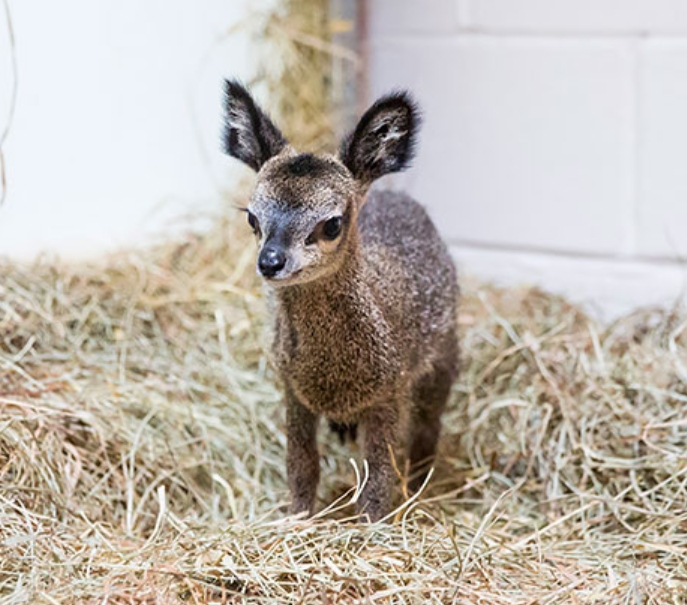
Baby Klipspringer
Baby Pika
This incredibly cute mountain mammal can be found in parts of North America and Asia. It waddles rather than walks, with a round body and short, stumpy limbs, and is known to carry small bouquets of flowers back to its burrow to eat during the winter. It is known as the ‘whistling hare’ because it frequently makes a high-pitched alarm call when diving into its home.
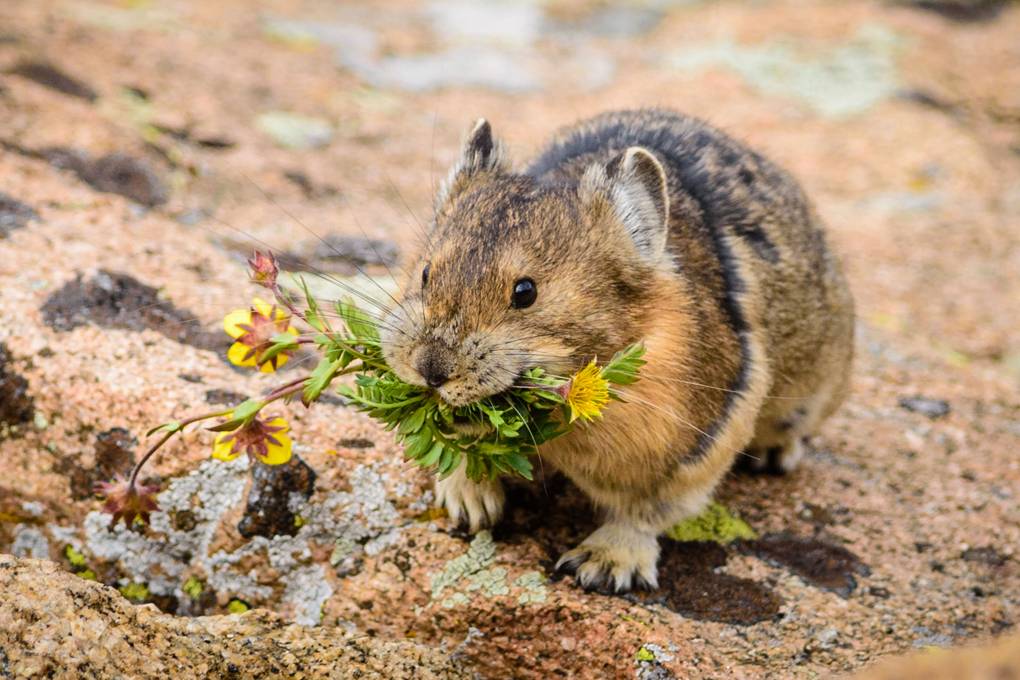
Baby Pika
Baby Quokka
Do you know who this little guy is? Since the quokka was dubbed “the happiest animal in the world” on the internet, many tourists have traveled to Australia to take selfies with this cheerful marsupial. Despite its cheerful appearance, it is considered endangered loss of habitat and human interference.
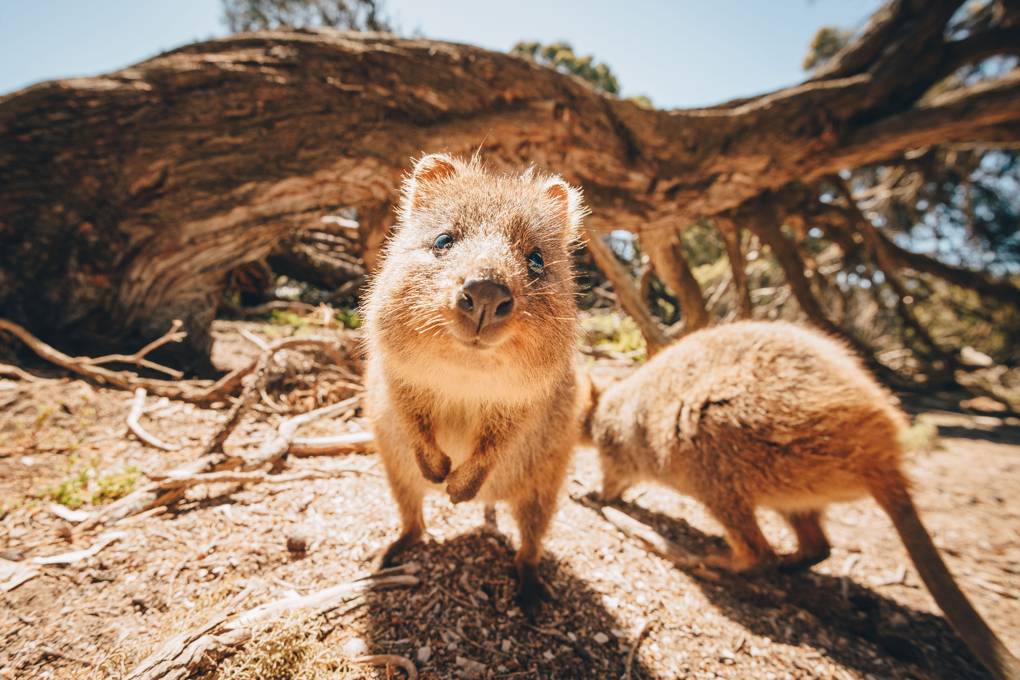
Baby Quokka
Japanese Weasel
Mustela Itatsi, a Japanese weasel native to the Japanese islands of Honshu, Kyushu, and Shikoku, hunts small rodents along rivers and, in the winter, under the snow. During the cold season, the weasel’s fur turns white, allowing it to blend in with the snow.
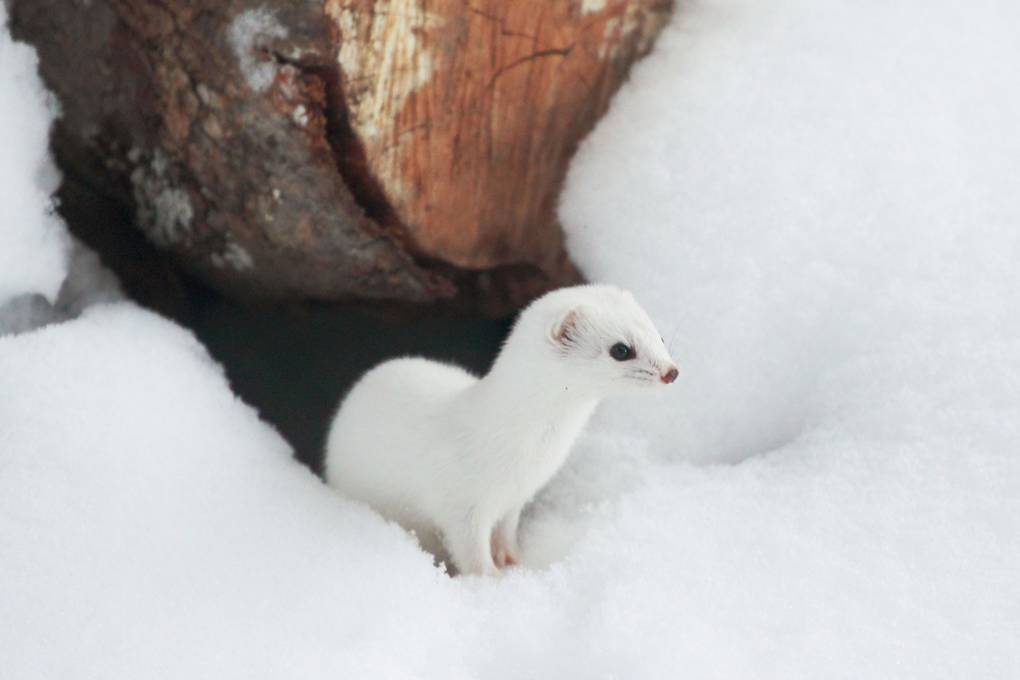
Japanese Weasel
Baby Jerboa
The long-eared jerboa, which resembles a small rabbit rather than a rodent, can be discovered in the grasslands as well as deserts between China and Mongolia. It’s only about 8cm long, but those massive ears take up a significant portion of its body length, enabling it to hear predators clearly and leap off on its strong hind legs like a ridiculously sweet miniature kangaroo.
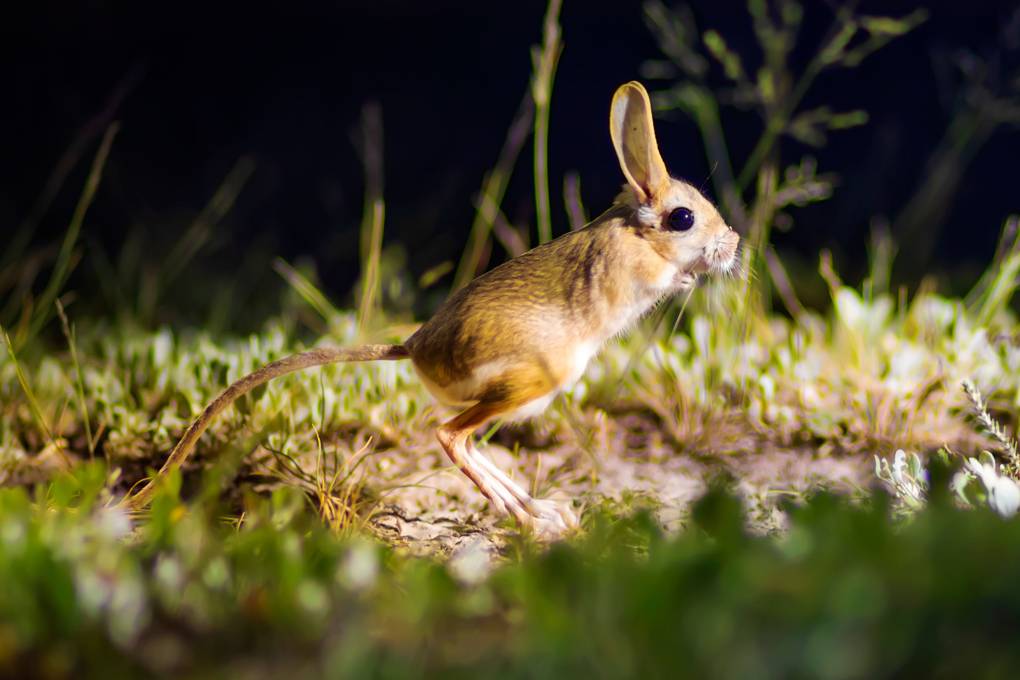
Baby Jerboa
Baby Slow Loris
This adorable creature may be familiar to you from your Instagram feed. The slow loris is more frightening than it appears, despite its big, soulful eyes, teeny hands, and super-slow movements. When threatened by a predator, it licks a gland on its elbow, and the oil secreted mixes with its saliva to yield a poison. While the rise in popularity has posed a threat to the species’ survival by fueling a trade-in selling the animals as pets, this delightful animal can thrive in the wild when observed from a safe and respectful distance.
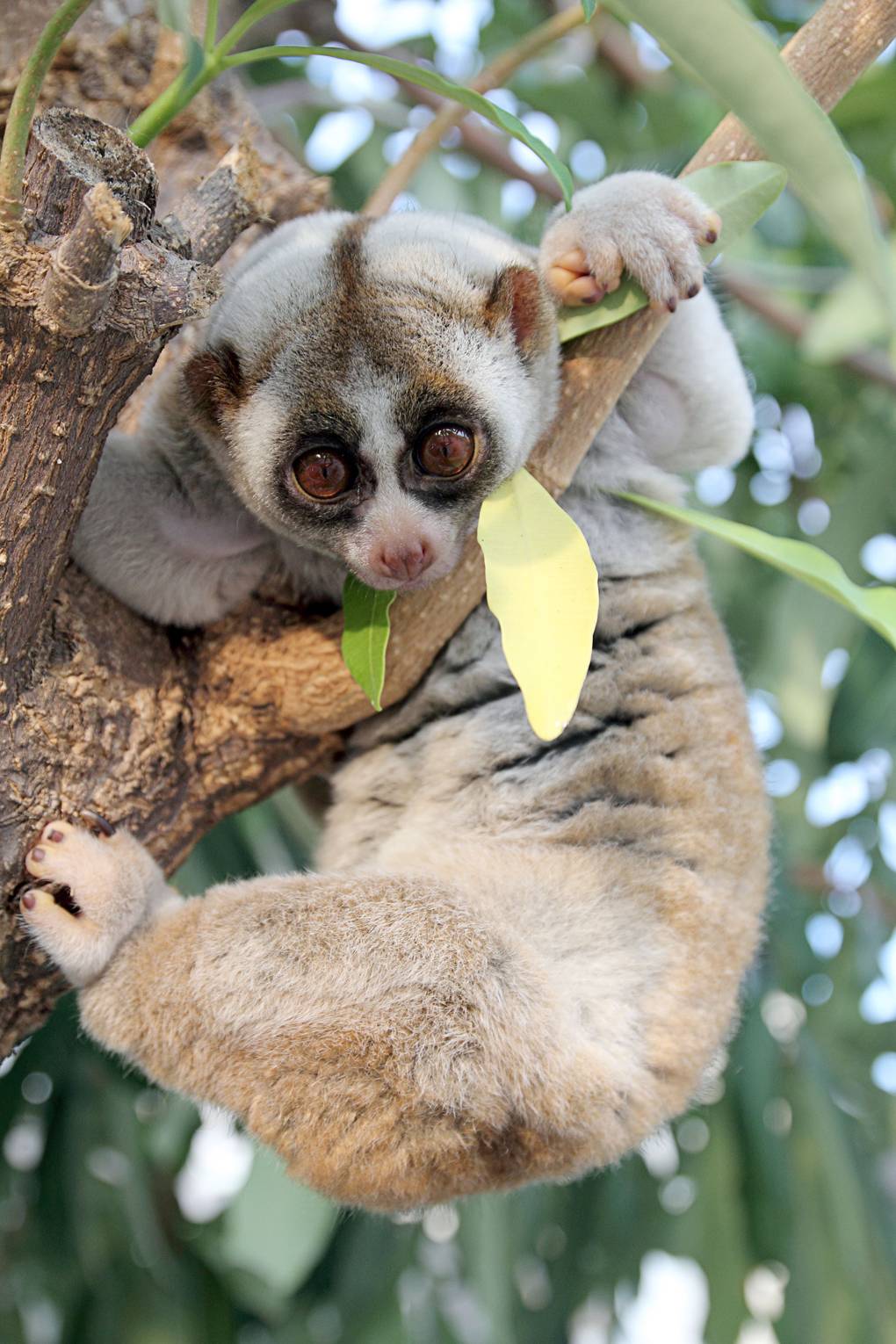
Baby Slow Loris
Baby Japanese Dwarf Flying Squirrel
This squirrel can be discovered flying around the highs of alpine forests in Japan, despite the fact that it sounds made up. The nocturnal creature has a thin skin membrane between its front and back legs that allows it to glide effortlessly between treetops at night.
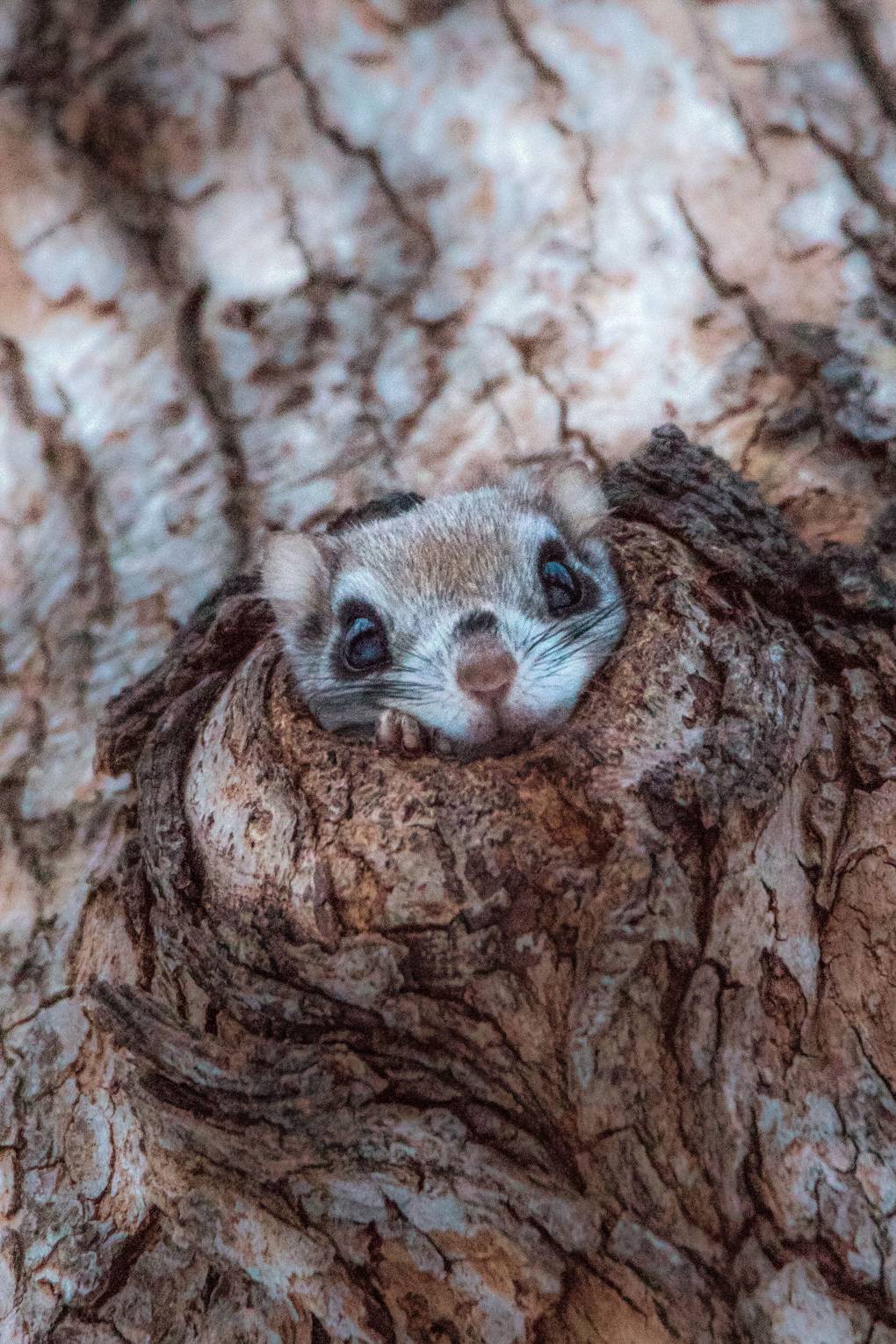
Baby Japanese Dwarf Flying Squirrel
Baby Bilby
This animal, also known as the greater bilby, dalgyte, or greater rabbit-eared bandicoot, can be found in the deserts of north-western Australia. The Bilby is a marsupial with a long snout, blue-gray fur, and tall ears. The female has a pouch to hold her young.
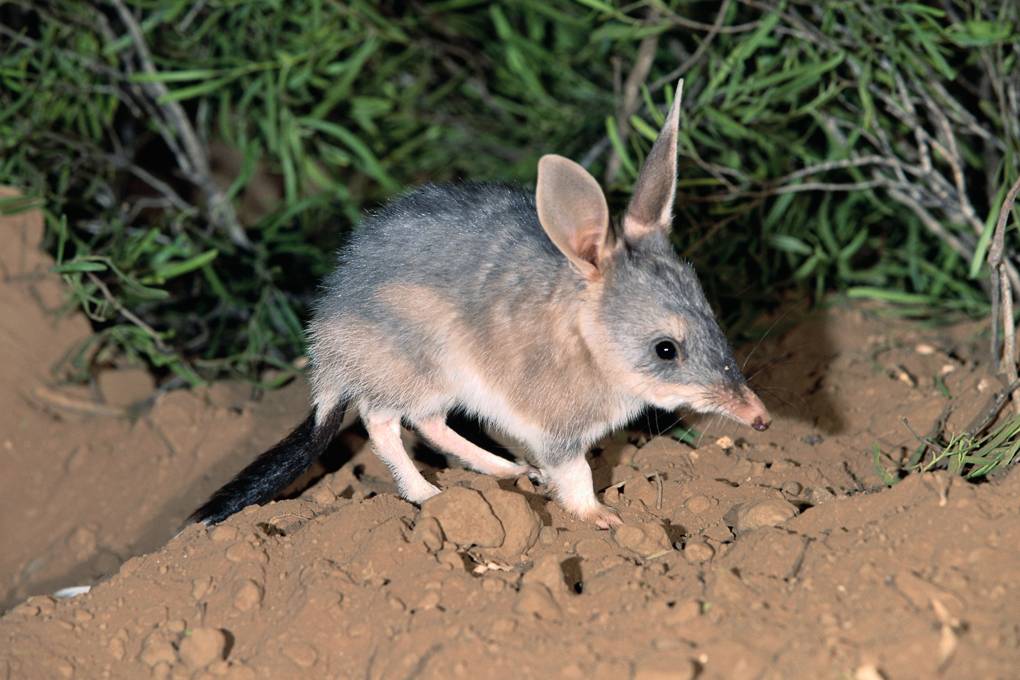
Baby Bilby
Baby Margay
The margay cat is a Central and South American cat that looks like an ocelot or an oncilla. The one and only cat that can twist its hind legs 180 degrees, permitting it to run head-first down trees like a squirrel, and also can hang from branches with its back feet, this nocturnal cat has adapted to a life spent primarily in trees. A tail that is approximately 70% of the length of the head and body serves as a useful counterweight for balance.
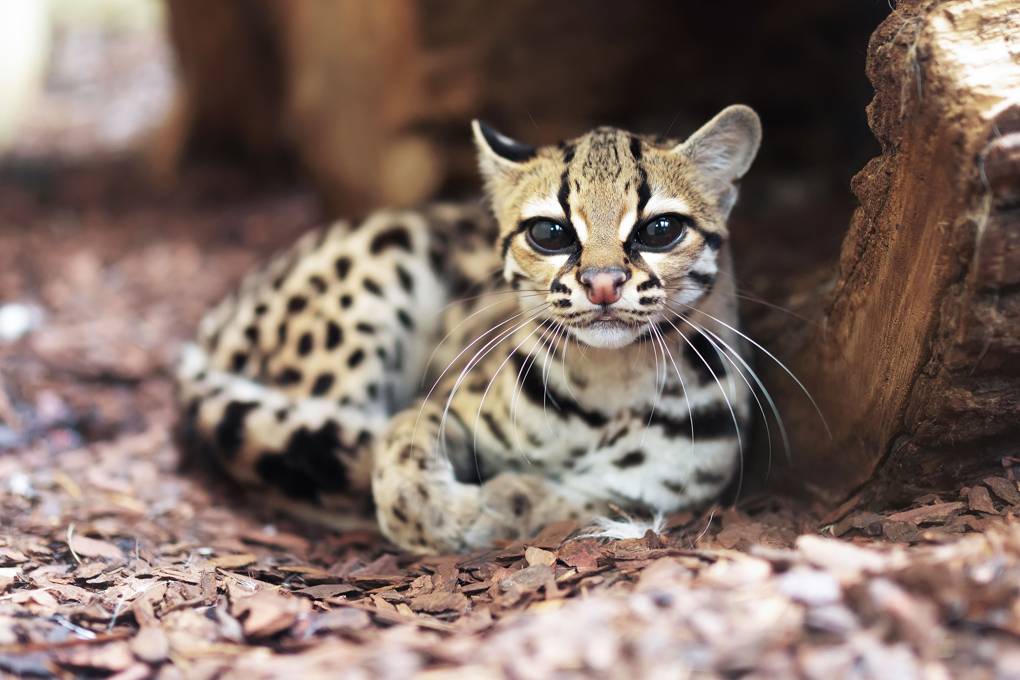
Baby Margay
Baby Capybara
This animal rose to prominence after appearing in Sir David Attenborough’s Planet Earth II, where it stood stunned as a jaguar viciously attacked and captured a caiman. The capybara is the world’s largest rodent and, like the beaver, is a semi-aquatic mammal with strong swimming ability.
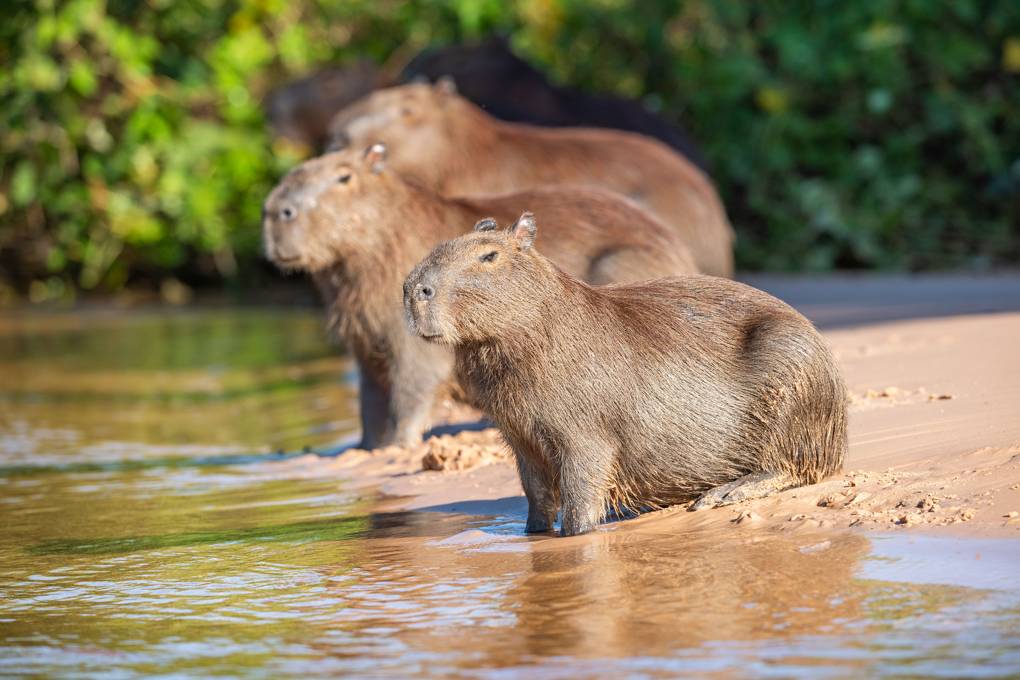
Baby Capybara
Baby Patagonian Mara
This rodent is mostly found in Patagonia, but it can also be found in other parts of Argentina. The Mara hops as well as gallops with its long front legs and shorter hind legs, similar to rabbits and hares. It is monogamous and moves in pairs, with the male defending his mate aggressively from predators and rivals.
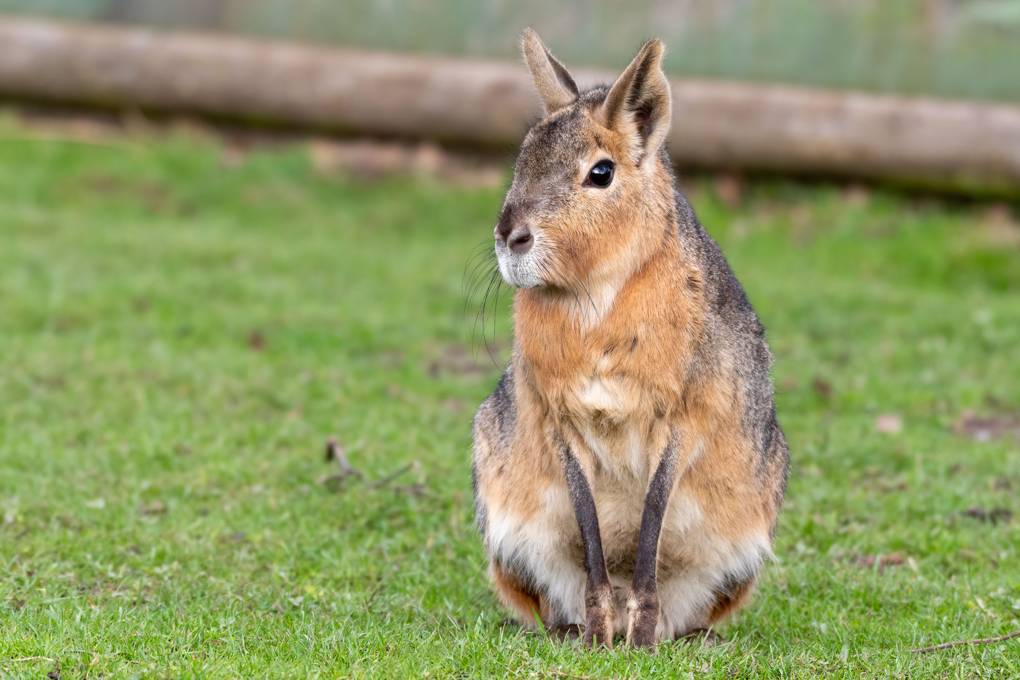
Baby Patagonian Mara
Baby Numbat
This adorable marsupial resides in Australia, but it is near extinction, with a population of fewer than 1,000 individuals. The animal has a long sticky tongue that it uses to pick up termites and is also known as a banded anteater, noombat, or walpurti (the only thing it eats).
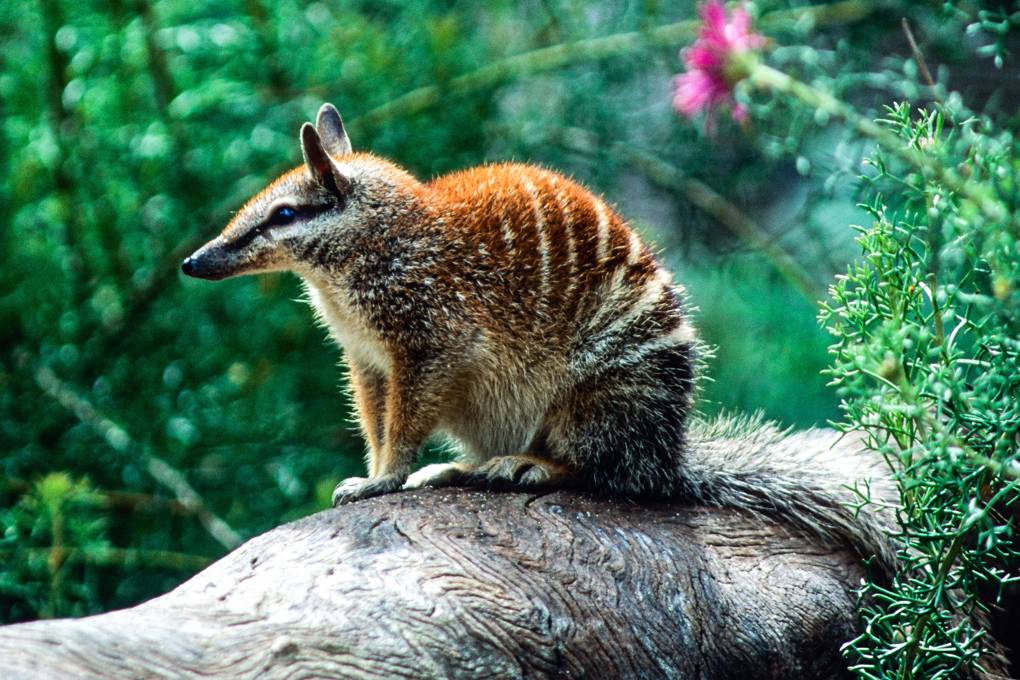
Baby Numbat
Baby Mangalista
The Mangalitsa (or “sheep pig,” as it is also known) is a Hungarian domestic pig breed known for its wavy coat. The pig has won many hearts all over the world, with many classifying it as more of a pet than a source of food, despite being bred as a farmed animal (it has a higher fat content than most of the other pigs, thus producing a tastier cut of pork).
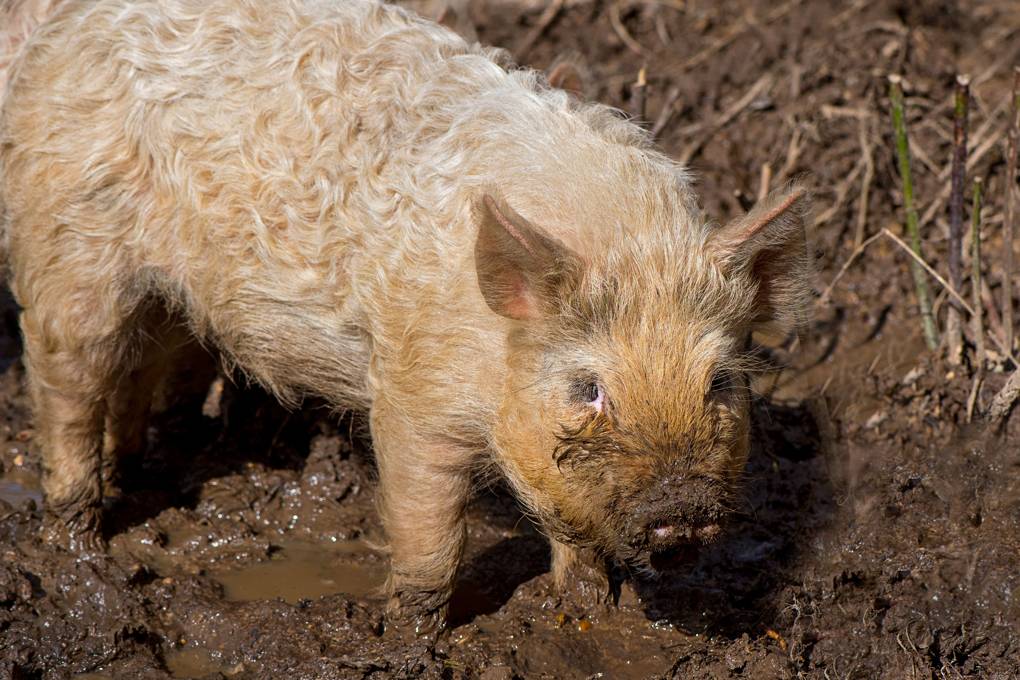
Baby Mangalista
Elephant Shrew
The elephant shrew is named after its long, trunk-like nose, which is usually only 20-30cm long. It is one of the fastest small mammals and has been recorded running at speeds of nearly 18 miles per hour. It is found in southern African countries and is also known as the sengi.
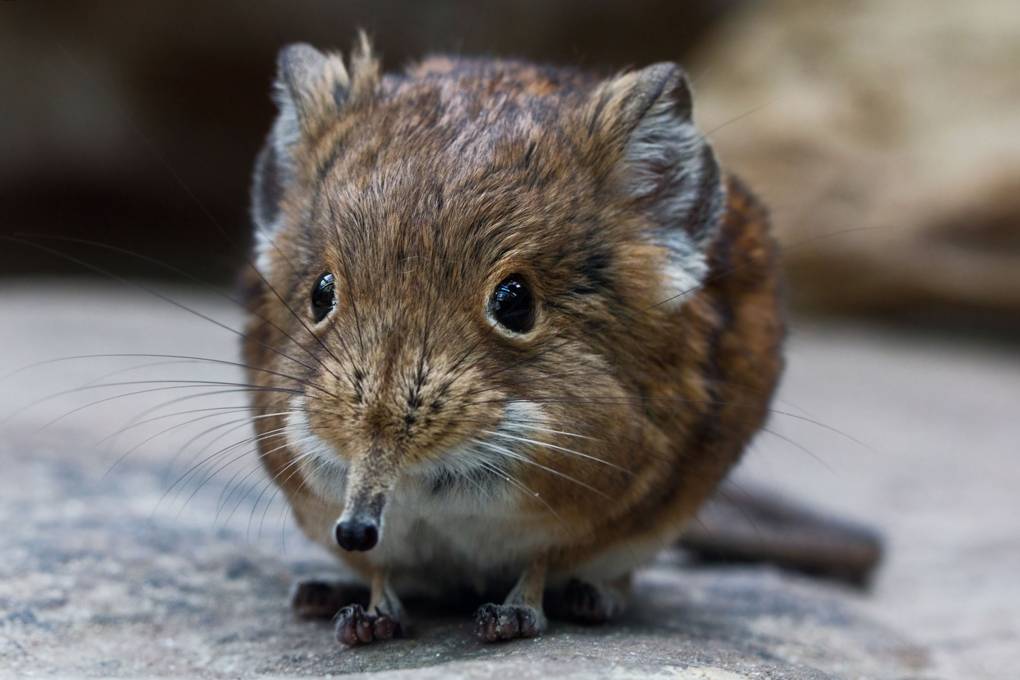
Elephant Shrew
Baby Tarsier
The tarsier is endearingly cute, with its large eyes, small body, and round head that can rotate 180 degrees. The animal is named after its long ankle bones, which are more noticeable than its eyes (tarsels). When confronted with extreme stress and discomfort, this tiny creature (up to 16cm) is thought to have suicidal tendencies.
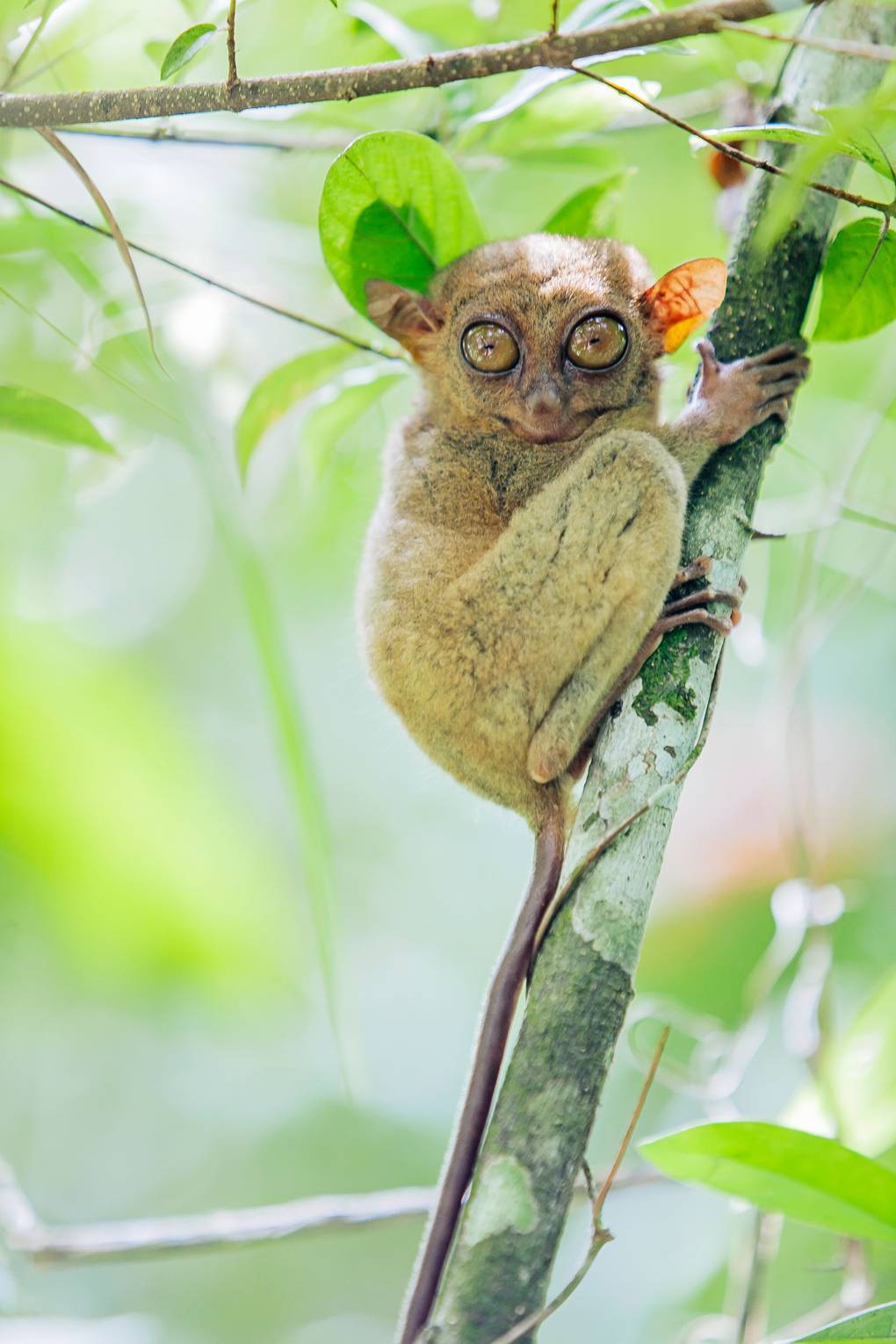
Baby Tarsier
Baby Japanese Racoon Dog
Tanuki is much more directly connected to dogs than raccoons. The papa and mama Japanese raccoon dogs are monogamous, and they bring up their puppies together.
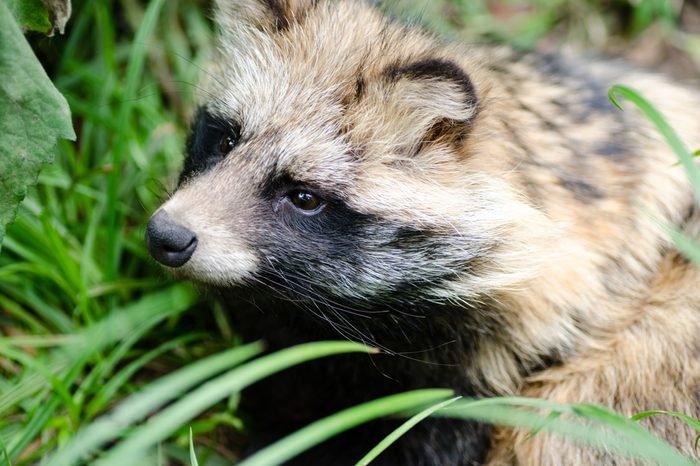
Baby Japanese Racoon Dog
Baby Chevrotain
These tiny animals resemble creatures from a fairytale forest. The hooved chevrotain may resemble a deer, but it is only about a foot tall at the shoulder. Male “mouse-deer” have tiny fang-like tusks instead of antlers.
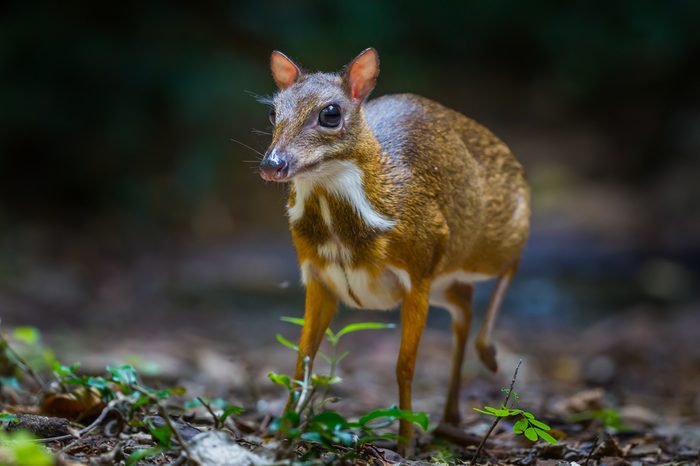
Baby Chevrotain
Baby Tamandua
This anteater is more adorable than its relatively large relatives. The tamandua’s long mouth and tongue enable it to consume up to 9,000 ants per day (wow! ), but it also eats termites, honey, and fruit.
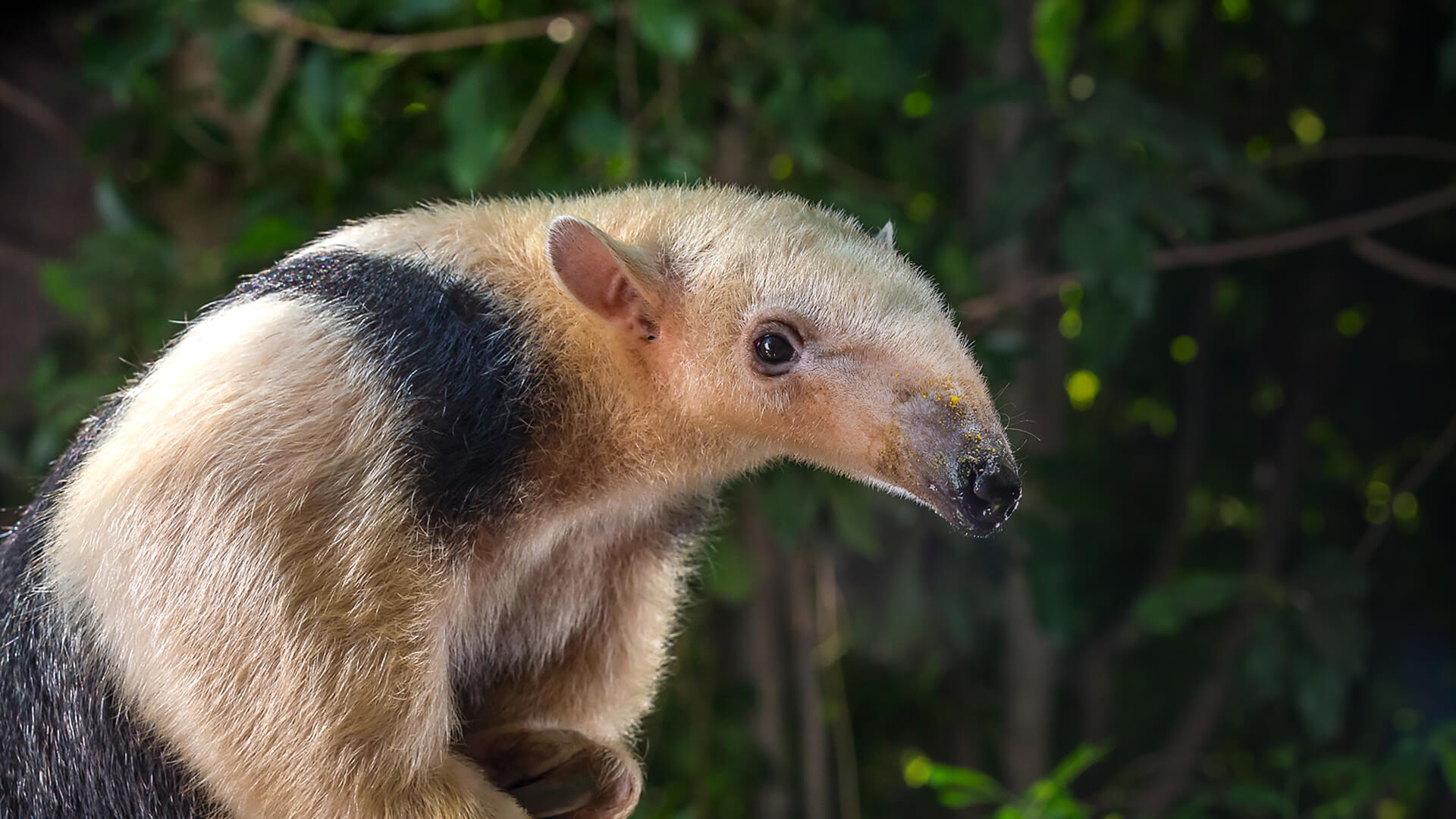
Baby Tamandua
Baby Maned Wolf
Gisele Bündchen’s legs are nothing compared to those of Gisele. The only member of the genus Chrysocyon, the fox-like maned wolf, is not related to foxes or wolves. The South American animal’s diet is dominated by a berry known as lobeira, which translates to “wolf’s fruit.”
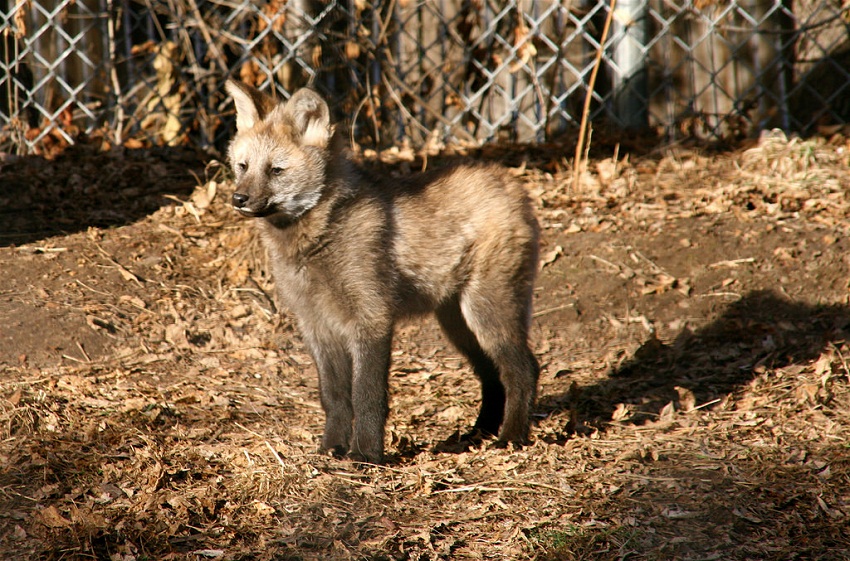
Baby Maned Wolf
Baby Tamarin Monkey
I have a mustache question for you: do you believe these monkeys are the cutest animals on the planet? The mustachioed tamarin monkey can be located in places of three to eight in rainforests, but it can also be found alone.
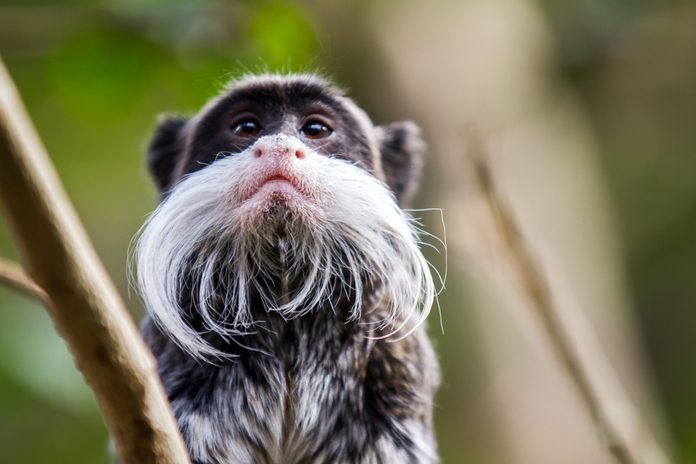
Baby Tamarin Monkey
Baby American Mink
While the American mink is native to North America, human influence has spread to other parts of the world, including parts of Europe and South America.
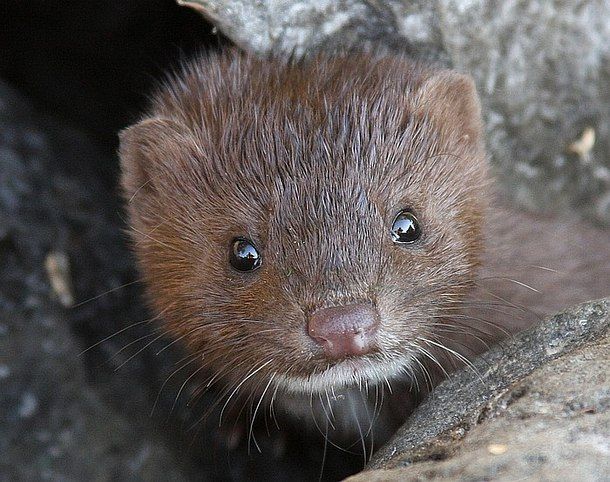
Baby American Mink



Comments